

23 MUST-HAVE Items on your African Safari Packing List
- Updated on January 15, 2024
- No Comments

This post may contain affiliate links. If you click through and make a purchase, we may receive a commission (at no additional cost to you). As an Amazon Associate, we earn from qualifying purchases. Learn more about disclosures.
First trip to Africa? You’re in luck!
Having recently been on Safari in Tanzania, we can provide you with first-hand, reliable and up-to-date information on how to make your trip stress-free, with this ultimate African safari packing list.

Packing for your first safari can be a daunting task. It is not just about taking the essentials, but also understanding what to expect from this new and exciting experience.
Most people don’t realize that African safaris are not just limited to a few hours in the wild.
You need to be prepared for lots of travel, long drives, and a great deal of time outdoors.
If you want to know exactly what to take and the practical reasons WHY you need them, then you’ll find this safari packing list incredibly helpful!

Safari Clothing Essentials
The following list of safari clothing is based on the assumption that you will be sat in a vehicle for the majority of the day, which makes your safari packing list a tad easier.
Note: We are all for sustainable travel and find no need to splurge on expensive safari gear that will only be used once!
Tips for Safari Clothes Packing
- Material Choose clothing that is easy to pack, dries quickly, and wicks moisture away from the skin. Man-made fabrics (such as polyimide) perform better than natural fabrics (such as cotton) and keep you cooler.
- Laundry Services Laundry services are generally available at camps and lodges, so only pack what you need as luggage space is precious.
- Wear Earth Tones The African Tsetse fly is ferocious and is attracted to dark blue and black colors. With bites similar to horseflies, they can and will make your trip a living nightmare! Choose khaki green and brown colors where possible. It’s best to avoid pale colors as you will get rather dusty and dirty during the day!
- Organize Your Clothing Organizing your safari clothing makes life so much easier, particularly if you have onward travel to another destination. Use packing cubes to place your safari clothes on the top for easier access and less mess.
Read More: Riu Palace Resort Zanzibar – Our Honest Review
Clothing for your African Safari Packing List:
1. safari shirt.

If there is one thing worth investing in, it is a proper safari shirt. We were the only ones in our camp that didn’t get bitten to bits by those relentless tsetse flies!
Tsetse flies can bite through thin or penetrable fabric, and a quality safari shirt will prevent them from doing so.
The best safari shirts will have built-in anti-insect treatment.
You can thank us later…!
2. T-Shirts
Layering is key to keeping warm and/or cool. Wearing t-shirts (under your shirt) also means you only need to fork out on the one expensive safari shirt.
3. Boots or Shoes
You don’t need specific safari boots or shoes and you certainly don’t need to spend a fortune on them. As you’ll be in the vehicle all day, a sturdy pair that you can wear with socks (that you can tuck your pants into) will do just fine.
When you’re walking around camp you won’t want to wear open-toe sandals, especially once you’ve seen all the sunspiders scattering around! Eeeek!
4. Safari Hat

Don’t forget your safari hat! You want full coverage – preferably one with a large brim that keeps your face and neck in the shade. Even with a pop-up roof, the sun will still manage to beat down on you, and it’s one heck of a sun!
Tip: Make sure your safari hat fits you snugly or has a neck cord – your rides will pick up speed and you don’t want to lose it with an unexpected gust of wind!
We love this packable safari hat that always bounces back to life (in featured photo).
5. Safari Pants
Long, lightweight, and enough to cover up those legs but not too hot or bulky. You’ll be sitting for a large proportion of the day so they’ll need to be comfortable.
You probably won’t want to wear shorts after you’ve encountered those tsetse flies.
Read More: The Lodge in Ngorongoro that has Spectacular Views
Lightweight, comfortable, and preferably water-resistant. Early starts can get chilly, so don’t be fooled – even if you’re the hardiest of people!
African Safari Packing List Essentials
7. soft-sided luggage.

If you’re traveling on bush flights you’ll be limited to 15kg on your luggage, plus you’ll need a soft bag (no hard suitcases allowed) that can be stuffed onto small planes. A duffel bag is an essential item to get your safari packing list going!
8. Packing Cubes

If you’ve never used them before, you’re in for a treat! Packing cubes made life so much easier on safari!
These provide the perfect way to organize your clothes and toiletries. Plus, you’ll be able to quickly see what’s in them which makes it easy when you’re looking for something specific without having to unpack everything. A total game-changer for organized travel!
Note: Plastic bags are now banned in many African countries and will be confiscated at airports. Sealable silicone bags are a perfect alternative for your leaky toiletries.
9. Universal Travel Adapter

Be sure to bring the correct travel adapters for Africa so you can charge your essential batteries. There are two types of outlets, European and British – this universal travel adapter will have you covered in any eventuality!
10. Insect Repellent
It’s important to keep biting insects away from you, both during the day and at night. They can carry dangerous diseases such as malaria, so don’t be tempted to leave this out.
The best type to use is one that can be sprayed over clothing. I know this may sound peculiar, but that’s what they all do in the bush!
Choose a natural repellant that does not damage clothing – this is the insect repellent we used and our safari guides absolutely loved it!
11. Tiger Balm

African tsetse flies have a nasty bite on them. This tiger balm will help take the edge off any itchy or swollen skin and should not be missed off your safari packing list. We first discovered this in Thailand and it’s by far the best relief for insect bites
12. First Aid Kit
Remember that you’re a while away from any emergency medical care. A simple first aid kit can take the stress out of any minor accidents along the way. Plus, you won’t have to rely on calling the staff to your tent at night if you have your own kit.
13. Sunscreen
Being so close to the equator means that you’re going to be exposed to a lot of UV radiation. Pack sunscreen and wear it when outdoors, even when you think you don’t need it.
On our first day, we thought the pop-up roof in our vehicle would provide enough protection from the sun – we were very wrong!
Read More: How we found The Best Safari Tour Guides in Tanzania
14. Sunglasses
UV protection is essential in Africa! Protecting yourself from intense sunlight will make your safari experience so much more comfortable. If you want to avoid squinting all day, then sunglasses are a must!
15. Flashlight

It gets pretty dark at night when you’re in an environment with zero light pollution. Most camps should provide you with a flashlight, but we would always err on the side of caution and have one handy.
16. Mosquito Net
It goes without saying that tented camps will lack any air-conditioning that ordinarily keeps mosquitos at bay! Check if your accommodation provides mosquito nets around beds before you book, if not – take one with you.
17. Power Bank

A power bank is essential if you’re on safari for more than a day. It’s always handy to have an external charger that can work anywhere in Africa.
Most safari vehicles will have USB ports that can be used with charging cables, but if you’re staying in tented camps then I wouldn’t rely on charging anything too quickly!
18. Selfie Stick
Wait, I know what you’re thinking… selfie sticks are soooo NOT on-trend!
But when you’re up close to a pack of lions feasting, or that cheetah that’s slowly walking behind your vehicle, you’ll be incredibly pleased you had something that could reach around to capture the all-important moment (rather than hanging your arms out of the jeep!)
19. Anti-Diarrhea Tablets
Being on the go in Africa can result in some stomach upset, so it’s best to have a supply of anti-diarrhea tablets with you. The last thing you need is for your bucket list safari trip to be ruined because you can’t part with the bathroom!
20. Binoculars

Check whether your safari vehicle provides a sufficient number of binoculars for all travelers.
If not, you might want to bring your own as there’s nothing quite like hurrying up the person next to you so you can cop a look at the action!
21. Microfibre Towel

These smart microfibre towels are light and packable for when you’re not staying in a hotel. They dry quickly too and won’t cause a stench when you’re on the go!
22. Toilet Paper/Wipes
Depending on your safari destination, there may not be any bathrooms within a 2-hour radius, so be prepared by packing toilet paper/wipes and hand sanitizer! These are absolutely essential items for your safari packing list!
23. Anti-Malaria Tablets
There is a risk of malaria in most parts of Africa. Speak with your travel clinic about the pros and cons of taking anti-malarial tablets, sometimes the side effects can be off-putting if you have existing medical conditions or a sensitive tummy.
You may decide that taking the tablets is not an option and therefore need to re-evaluate whether an African safari is the right choice for you.
Read More: How Plan an Affordable Serengeti and Ngorongoro Safari
Other Handy Safari Packing Tips:
- Take sufficient cash You may be surprised to hear that there are no ATM machines out on safari! Make sure you bring enough cash for the duration of your safari for souvenirs, additional snacks, drinks at your camp/lodge, and tips for your safari guide
- Drones Drones are not allowed by any camps in East Africa due to the effects they have on wildlife (and also for security reasons)
- Hairdryers Hairdryers and other powerful appliances generally cannot be used if you’re staying in tented camps as electricity is scarce
- Avoid any military/camo clothing It’s a safari, not the SAS! Just kidding. The real reason to avoid military-style clothing is that it may land you into trouble in some territories, especially in Kenya. Governments are wary of anyone posing as a military officer and will question your intentions. A situation we would all just rather avoid!
READ: Zanzibar Travel During Covid-19 – What You Need To Know
Your Safari Packing List Covered!
Packing for a safari can be stressful, especially if you have no idea what to expect.
Hopefully this African safari packing list will help to make your experience as stress-free as possible, so that you can focus on making great memories instead!
You may also be interested in our post about Safari Anxiety: 19 Things That Freak People Out
Further Reads:
- Things People Worry About on Safari
- How to Save $$$ on an African Safari
- 9 Luxury Safari Tented Camps in Serengeti
Related Posts

African Safari Anxiety: 19 Things People Worry About!

Riu Palace Zanzibar Review: Best All-Round Luxury Hotel

Roy Safaris Review: Best Tour Operator in Tanzania?

11 Smart Tips: How to do Affordable Luxury Travel
Luxurious destinations are little to do with how much they cost and everything to do with how they make us feel – long after the journey ends. That’s the essence of Roaming in Luxury. We’re a group of people who have mastered the art of LuxVenturing – a blend of adventure and affordable luxury travel. Our aim is to share our insights, resources, and stories, so you can focus on crafting the best, most affordable luxury experiences on your own travels. Read more about us…

Leave a Comment Cancel Reply
Your email address will not be published. Required fields are marked *
Remember Me
Become a Luxventurer with us!
Don’t miss out on the thrill of luxury adventure! Sign up for our newsletter and get insider tips, exciting destinations, and inspiration for your next luxurious adventure, all delivered straight to your inbox.

Quick Links
- Cookie Policy
- Privacy Policy
- Terms of Service
Search the site
Copyright © 2024 Roaming in Luxury | All Rights Reserved

Unlock the Secrets of Affordable Luxury Travel!
Are you an adventurer with a taste for comfort? Join our newsletter and receive weekly tips on experiencing luxurious destinations without breaking the bank.
African safari packing list – What to bring on a trip to Africa

It’s easy to over-complicate an African safari packing list. This is Africa, it’s going to be wild, so you feel a need to pack for all eventualities.
Most people really want to look good when coming face to face with an elephant or lion , usually because they want to look good in the photos.
It’s easy to get hung up with your safari packing list, so we’re going to simplify everything .
You’ll start to feel butterflies in the stomach and that familiar twinge of anticipation as you pick your clothes and pack your outdoor essentials, and of course, your trusty camera for snapping an ungainly hyena or a soaring African fish eagle .
Stick to our carefully considered safari selection , and you won’t go wrong!
Tips for Your Africa Packing List — Keep it Simple
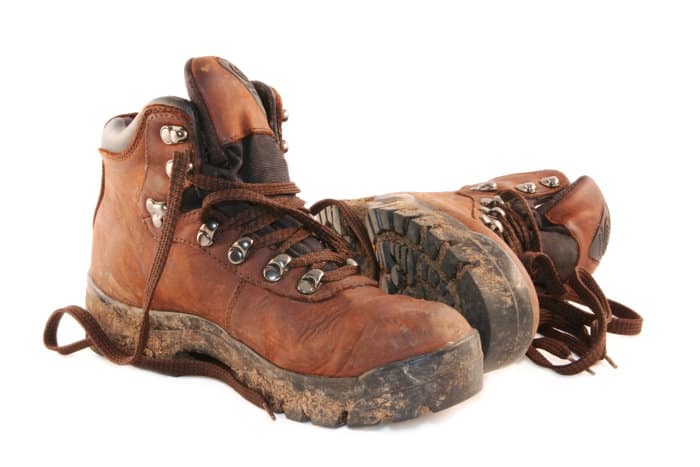
It can be daunting. Choosing what to stuff into a suitcase for a beach holiday is difficult enough, never mind the items for an adventure.
Our Africa Freak contributors have experienced guests turning up with a bizarre range of things, including plastic toilet seats , tinned baked beans , and fluffy slippers .
Most safari-goers appear to have the same safari packing list because so many on the African savanna wear similar clothes.
The most common mistake is to have high-quality walking boots near the top of the list. Yes, they’re essential if you are going on a walking safari.
But many safaris only include game drives, and you can’t get out of the vehicle. The furthest most people walk in their heavy boots is 20 meters from the vehicle to the tent .
The big cats and wild mammals don’t care too much about fashion , so they won’t pass judgment if your colors are clashing. Nor do they care if you wear the same trousers three days in a row.
Why you should keep your packing list for safari simple

Traveling light makes everything easy. With most safari itineraries, you will be moving destinations and camps on an almost daily basis.
It gets tiresome packing and unpacking, so keep it simple and travel light. Many lodges and camps have laundry facilities anyway.
Simplifying the safari packing list is also essential because there simply isn’t enough space for large and bulky luggage.
Domestic safari flights use light aircraft where space is a premium. They have strict luggage weight limitations, usually 15 kg for all your luggage .
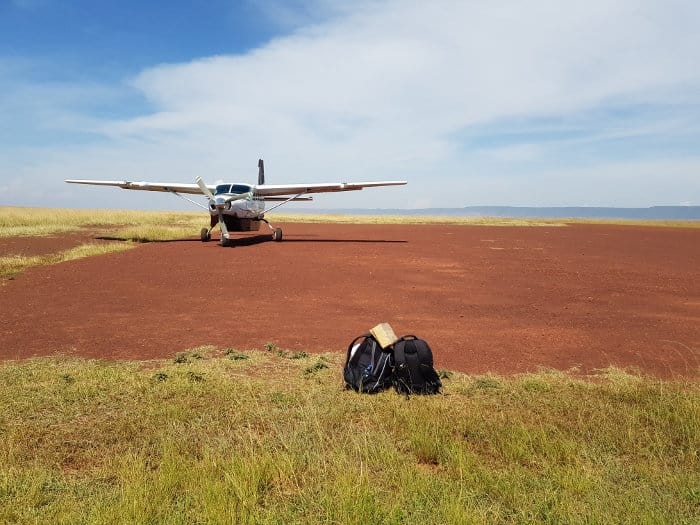
Safari vehicles don’t have space for oversized luggage. Just imagine watching the great wildebeest migration and getting cramps because luggage ruins your leg space.
Many people want to look their best whenever they encounter other people. Out on the African savanna, you won’t encounter many people . Even when you do, the people are looking at animals instead of you.
So dump the fashion and embrace the adventure!
The lighter you can travel, the better. And your clothes will get ruined by all the dust and sun, so keep the three-piece suit at home and follow this basic safari packing list.
African Safari Checklist — Important Items for Travel
Beyond your clothing and gear, these are the items that you do not want to forget when going on an African safari:
- A valid passport and visa for the country you’re traveling to.
- Air tickets.
- Travel vouchers for pre-booked safari tours.
- Travel insurance.
- Proof of required vaccinations.
- Photocopies of all your important documents — passport, visa, air tickets, travel insurance, etc.
- Cash for expenses.
- A cellphone and charger.
- Medication and prescriptions.
1. African Savanna Clothing Essentials
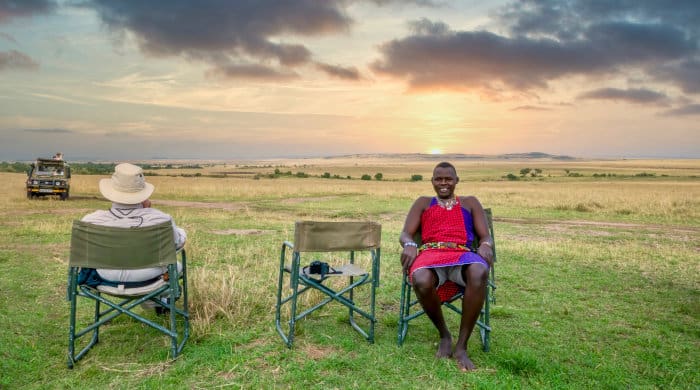
Okay, so you know you need safari clothes . Nobody wants to get that close to nature out in the African wilderness.
But what kind of clothes?
When it comes to safari clothing, the rule of thumb is to stick to simple , lightweight clothes .
Most people find lightweight shorts or trousers the most comfortable on safari, depending on the time of year and your exact safari location.
They don’t need to be the zip-off variety; they just need to be comfortable .
You should also take some loose-fitting, comfortable shirts or t-shirts – maybe not your absolute favorites though since they’re likely to get a little creased and more than a little sweaty! Lightweight and breathable fabrics are best.
One long-sleeved shirt – possibly with inbuilt insect or sun protection – is also very useful as it provides protection from sun and insects.
Hat and accessories
Moreover, you’ll need a wide-brimmed hat that covers both your face and the back of your neck. Put this one at the top of your safari packing list.
It’s also worth taking a warm fleece with you – yes, Africa is a hot country, but early morning game drives can be quite chilly, and you’ll feel the bracing breeze once you’ve got the windows and roof open!
You’ll appreciate it on the cooler evenings, especially if you want to take an al fresco drink or sit at the campfire if you’re staying at a tented camp.
Take some sturdy walking boots if you want to go on a nature walk, a walking safari, or a mountain hike. Sneakers or trainers are fine otherwise.
Just make sure you have closed footwear as mosquitoes love to find gaps in sandals.
In addition, ladies may wish to take a sarong or kanga with them. You can use these multi-purpose garments as a headscarf to keep hair out the way if it’s particularly windy, a scarf if it gets chilly, or a lightweight shawl to protect shoulders from the sun.
You can also fold a sarong nice and small to fit in your day bag (we recommend a small backpack) when you’re not using it!
Some safari lodges may feature swimming pools so that visitors can relax between excursions and escape the sometimes sweltering heat .
Additionally, there are various safaris that pass by waterfalls, lakes, rivers, and rock pools that are suitable for a refreshing dip.
For this reason, having a swimming costume on hand is important. Please note this may not be the case for all safaris.
What color clothing to include in your packing list for Africa

An essential tip: don’t wear black or dark blue clothes on safari .
Black and dark blue attract tsetse flies, which are a real annoyance, especially in East Africa.
Khaki colors are the best because they match the dust.
Bright colors are fine for game drives; they just look dirty and dusty very quickly. Having said that, it’s better to wear neutral colors on game walks.
Why? On game drives, animals don’t see your clothes. They see the vehicle rather than you. On walking safaris, it’s easier to get closer to the animals when you blend into the landscape rather than stand out.
2. Healthcare Essentials For Your African Safari Kit List
There are numerous items you may need to ensure you have a pleasant and comfortable experience out in the wild .
From a high SPF sunscreen to a mosquito repellent, here are some things you should not leave out when packing for your African safari.
Sun cream and sunglasses
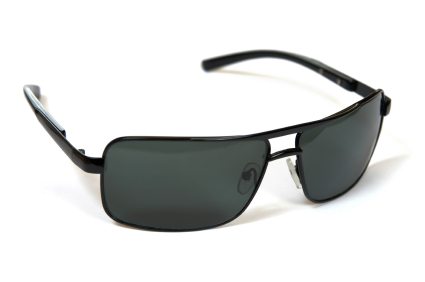
First on the list is some very high SPF sun cream . Even if you consider yourself used to the sun, the sun is extremely strong in Africa, and it’s simply not worth getting burnt.
You don’t want any distraction from your game-viewing, and you can’t get an all-over tan in a safari vehicle anyway. Factor 50 is recommended. Seriously – SPF 50 is the minimum for the African sun .
It’s also useful to bring an extreme/sports sunblock . These are very small – usually the size and shape of a lip balm.
You can carry this in a day bag or pocket for reapplication to sensitive areas whenever you feel it’s necessary.
You’ll also need some good-quality sunglasses . Sunglasses come under healthcare essentials and not clothing in the safari packing list, because you will need sunglasses to protect you, not just as a fashion accessory.
Physicists recommend you choose sunglasses with at least 99% UVB protection and 95% UVA protection.
Instead of offering proper protection, cheap sunglasses will simply darken your vision, meaning your pupils will dilate to allow extra light in.
Without proper UV protection, your dilated pupils will also take in more harmful UV rays and could cause extensive damage to your eyes.
Lip balm, moisturizers, and antiseptic creams
One thing about the wild is that the climate is not always the most forgiving. Oftentimes it will be hot and dry, resulting in chapped lips and dry skin. Lip balm and moisturizer are useful in these cases.
If you’re spending a lot of time out in the wilderness, chances are you’ll need an antiseptic cream . This is a multi-purpose cream that helps with scratches, burns, and insect bites.
Mosquito repellent

Take some mosquito repellent with you. If you don’t want to carry a large bottle when you’re out on game drives, just bring some wipes in your day bag.
They come in tiny sachets and are very handy – especially if you’re out on an evening game drive when the sun is setting and mosquitoes are at their most active .
3. African Safari Gear List — Interactive
When on an African safari, there are several pieces of equipment that you can bring along that will enhance your experience . The items below are popular amongst avid safari-goers and tourists alike.
Camera gear
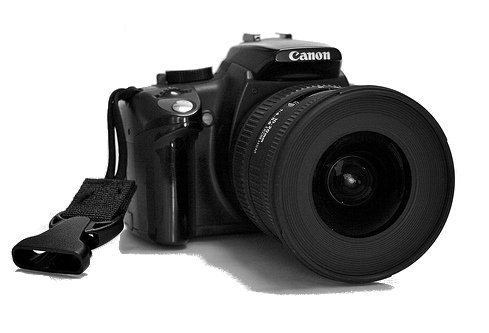
First on the list has to be a camera and all the stuff that comes with it.
Depending on your passion for photography, you may need anything from spare batteries or a charger to extra memory cards , a zoom lens, and a dust-proof camera case .
Whatever your level, a little beanbag is always useful for resting your camera on and steadying your hands. It’s the safari-friendly alternative to an unwieldy tripod!
Need packing tips for your African photo safari? Well, you will need a bag that can adequately protect your gear. Find out more in this safari luggage guide.
Tip : Check out these African wildlife photography websites for some inspiration before your safari trip.

Even if you have fantastic eyesight and the world’s most observant safari guide, a pair of safari binoculars will enhance your safari experience immeasurably.
Using binoculars is often the only way to take in those tiny details – examining the differences between a plains zebra and a Grevy’s zebra stripes , marveling at the sheer size of a black rhino’s horn, even staring into the golden eyes of a hungry lioness.
Luxury safari item – wildlife book
Of course, you’ll want to know exactly what it is you’re looking at through your fantastic binoculars. Was that a ground hornbill or a kori bustard ? A Masai giraffe or a Rothschild’s?
Doing a bit of research in some bird and wildlife books is worth every minute. It’s no use your guide telling you that today you might spot a rare beisa oryx if you’ve got no idea what these beautiful creatures look like!
The enthusiastic botanists amongst you might even want to take a guide to the plants, trees, and vegetation you might encounter.
The landscape of Africa is hugely diverse, from the riverine forest to the open savannah to the reed-spotted marshlands. And you wouldn’t want to confuse a doum palm with an oil palm, would you?
4. Packing List for African Safari – Safety, Security & Practicality
Below are important items to include in your African safari survival kit.
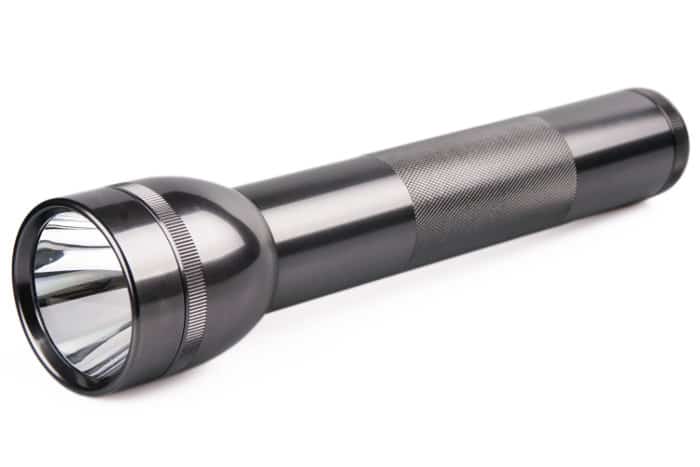
A torch is always useful to take on a safari holiday. If you’re staying at a campsite, a large torch and a head torch will, of course, be a blessing.
Even many of the most luxurious tented camps and permanent lodges turn off the power, usually from around midnight to five in the morning (either for practical or environmental reasons).
In this case, a wind-up torch is useful for any late-night trips to the toilet!
NB : You can usually arrange to have the power turned on before the scheduled time in cases of early departure etc.
Swiss army knife
A Swiss army knife is a marvelous miscellaneous tool for any occasion. The bottle opener is there for opening cold drinks bought at roadside cafés on long journeys.
The scissors are handy for snipping off loose threads. And of course, if you’re camping, the various knives and tin-openers will be invaluable.
You may not even use a Swiss army knife, but it can be a comforting item for an adventure in the wilderness.
Although they may not be entirely practical for wear during your actual game drives, a money belt is undoubtedly the most secure way to keep your money, passport, and other important documents on hand when you’re in transit.
They are particularly useful if you are flying through large and busy airports such as Nairobi or Johannesburg, or if you have to take coach or train transfers anywhere.
Wet bags are convenient on safari trips—especially those that involve getting down and dirty. With this, you’ll be able to keep important items or documents safe from the elements .
They’re also ideal for storing snacks as they will stay fresh. But be sure to keep them away from the animals.
Africa Isn’t Middle Earth – It Does Have Shops

Africa is not a primitive continent . It has shops and shopping malls . It’s not just elephants on the airport runway and pure bush.
In major cities, you can buy most things you will need for a safari, the obvious exception being high-end camera equipment.
So yes, you can buy toiletries, suncream, safari clothes, safari hats, and almost everything else after you arrive in Africa.
Furthermore, it’s probably cheaper to buy in Africa than at home.
However, once you’re on the road and into vast national parks , there won’t be any convenience stores. So if there’s something you need, speak to your guide before leaving the town or city.
Do You Have Everything On Your Safari Packing List to Africa?
So, that’s our complete safari packing list. Pretty simple, huh?
But before you go, be sure to double-check that you have everything . From your important documents to your clothing and gear, each of these items will play an important role in ensuring the most memorable experience.
Now that you know what to bring on an African safari, the only thing left to do is book your trip . For some of the most thrilling adventures, check out these incredible safari deals .
We hope you’ve found the article helpful, and remember the most important thing – safari njema!
About The Author
Editorial Team
Related posts.

Best safari clothing: brands, clothes & tips for African safaris
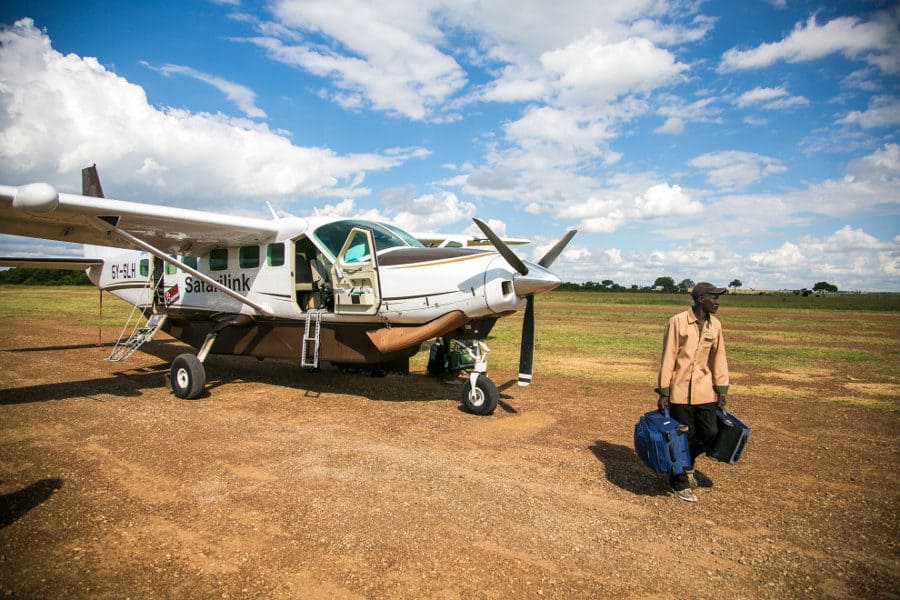
Best safari luggage – Duffel bags & backpacks for African travels
Leave a comment cancel reply.
Your email address will not be published. Required fields are marked *

What to take on safari
Last updated September 29th, 2023.
This guide may contain affiliate links. At no cost to you, they allow me to provide these free and, even if I do say so myself, expert guides based on almost two years of travel in Africa. For a broader view, don’t miss my complete guide to travel in Africa .

It’s never too early to start planning your next safari. Having worked out where to go on safari , the next question is what to take on safari. I’ve already covered the basics of what to wear on safari , and so I won’t repeat the same information again here.
Instead, this guide is intended to be the only safari kit list you’re ever going to need. Maybe you worry about forgetting some safari must haves. I know I do.
To try and prevent this, below you’ll find a list of all the safari gear you’re likely to want.
Safari must-haves

– Passport. This will generally need at least six months remaining validity from the date of your arrival in Africa
– Visas. As well as knowing what to pack for a safari in Kenya or anywhere else, you’re also going to need to sort out a tourist visa before departure. Probably. It all depends on the nationality of the passport you’re going to travel on. And where you’re going. The good news is that some countries offer visa-free travel for tourists . Other countries, like Kenya, have switched to an evisa system, meaning no more trips to their embassies. Here’s hoping yet more nations follow suit soon.
– Spending money. US dollars are usually the best currency to take on African safaris. Euros and British pounds are a good second bet if you’d otherwise have to go to a currency exchange.
– At least one credit or debit card. Credit and debit card payments are still limited in much of Africa welcoming safari tourists. However, they can be used to withdraw local currencies from ATMs. Fees will usually apply.
– Travel insurance details. Should the worst happen, the emergency contact details of your insurance provider are next to your passport in their importance. Don’t go anywhere without them, and don’t rely on having internet access to find them.
What clothes should you pack for a safari?

Safaris are pretty relaxed affairs, so you’re not going to need anything special for evenings, unless you fancy dressing up.
The key aim is staying cool and comfortable on game drives and walks which can last several hours.
The same applies when deciding what shoes to wear on safari. You’ll want covered shoes rather than sandals or flip flops. These will protect your feet from dust, stones, and biting insects.
At the same time, you’ll want to choose a pair you’ll be happy wearing all day.
I’d suggest packing a minimum of three days’ worth of clothing if you’re practiced at travelling light. More if you’re not.
Many lodges have laundry facilities, where you’ll be able to wash clothing for a small fee.
If you’re wondering what to expect from a lodge, my guide to when & where to see the great wildebeest migration links to some of the Serengeti’s best. These include Ngorongoro Wild Camp and Asanja Africa .
These are your must have clothing items.
– Comfortable underwear. No judgements, but the less scanty the better.
– Socks. Just promise not to wear them with sandals.
– Shirts/blouses. Shirts and blouses tend to be cooler than T-shirts, and more protective than vest tops.
– Pair of long trousers. Long trousers are also more protective than a skirt or dress against thorns and other irritants. They’re also useful for defending bare flesh against biting insects after sunset. Jeans are best avoided due to the heaviness of the material.
– Pair of shorts
– Belt. Well worth taking even if you don’t usually require one, just in case.
– Swimming costume. Many lodges have swimming or plunge pools, others outdoor showers. You may well fancy a half day’s sunbathing too.
– Sun hat
– Sunglasses
– Sunglasses case. I’ve broken way too many pairs of sunglasses to not recommend a sunglasses case.
– Sweater. Early mornings and evenings can see a slight chill in the air.
– Flip flops. A good lightweight alternative to shoes, and a godsend in some shared bathroom facilities.
– Pair of trainers, walking shoes, or hiking boots. You’re going to live in these, so make sure they’re comfortable.
Sleeping and carrying on safari

The list of what to take on safari when it comes to sleeping and carrying will largely depend on how you’re tackling your safari.
If you’re on an organised tour (and there are literally thousands to choose between on sites like Viator and Get Your Guide ) and staying in a lodge, you won’t need anything more than a backpack or holdall for your clothes.
It’s generally not worth the hassle of bothering with a day bag.
But if you’re camping independently, the list of items you’ll need for a safari will be longer. The following list is mainly intended for those safari goers.
– Tent
– Inflatable rollmat
– Inflatable pillow
– Sleeping bag liner. If you get particularly cold at night you may want a summer sleeping bag instead, but I’ve never felt the need.
– Impregnated mosquito net
– Travel towel
– Camping stove, pots and fuel
– Metal crockery/mess tin
– Cutlery
– Sponge for cleaning kitchenware. See the medical kit section for cleaning fluids.
– Food/snacks. Buying local will lighten your load, and boost the local economy, although choice can be limited compared to supermarkets back home.
When it comes to food while camping, you’ll want dishes that don’t require a lot of cooking. Less cooking time means less fuel needed.
Army rations are a starting point, although you’ll have much more enjoyable mealtimes if you prepare basic dishes yourself.
Small pasta shapes cook more quickly than rice, and can be flavoured with anything from sauces to pesto and sardines (though I’ve never tried the latter two together).
Tinned meats provide a source of protein, as do eggs, which are usually readily available locally.
Safari survival kit items

My safari survival kit items are those I’m loath to leave at home, since they are so useful when on the road, and always fit into a little nook with ease.
– Combination padlock. Make sure it fits any locking mechanism on your luggage or you’re carrying dead weight.
– Water filtration device. There are plenty of ways to filter water instead of drinking environmentally unfriendly bottled waters. I cover them in more detail here in my complete guide to travel in Africa .
– Wrist watch with alarm. For those early morning game drives.
– Battery-operated head torch. A good idea in case you wake up in the night and the generator isn’t running.
– Penknife or Leatherman-style tool.
– Duct tape. Seriously useful for repairing almost anything, wrap around 5 metres of the stuff around an old toilet tube, bottle or walking pole and forget about it until you need it.
– Pen and paper
– Compass. Brilliant for determining the way to everywhere from the restaurant to Lake Victoria.
– Small sewing kit. For repairing all those things that duct tape can’t.
Camera gear for safaris

– Tripod/beanbag. Good tripods are pretty clunky, and travel tripods a little unstable. If you’ve got a relatively flat surface, such as the sides of a safari vehicle, a beanbag can make a lightweight alternative.
– SD cards. Take as many as you can, and swap them around as often as possible. In this way, if you lose or damage a card (and safari dust is a killer), you’ll still have a good selection of images on your return home.
– Standalone external hard drive with SD card compatibility. To back up your images on a daily basis without needing a laptop or other device as well.
– Camera lens brush.
– Camera charger/extra batteries. Charge your camera whenever you can, since power can come and go without warning even in top lodges. Never leave your camera unattended.
– International plug adapter. You’ll need at least one international plug adapter if you’re travelling with any sort of electronics. One with a USB socket is doubly useful. Plug types you’ll find on safari range from British-style square three pin sockets to European-style round two pin sockets. Sites within the same country can have different types.
Medical kit for safaris

– Any medications you take as standard, such as the contraceptive pill.
– Antihistamine cream. For soothing bites and scratches. Hay fever doesn’t usually affect me on safari as it does at home, but you might also want to take a safari’s worth of one a day antihistamine tablets just in case.
– Decongestant tablets. Colds are common after long flights, and these do everything a cold and flu remedy will but at a fraction of the price.
– Sachets of rehydration mix. Widely-available original (red) Coca-Cola makes for a good substitute. Add a pinch of salt if you can. If you can taste the salt, great, if you can’t, you’re already seriously dehydrated.
– Soap. Can be used to wash hair, body, clothes and gear like crockery and cutlery.
– Ibuprofen or other over the counter anti-inflammatory drugs for strains.
– Paracetamol or other over the counter pain relief for aches and pains.
– Anti-diarrhoea tablets, containing loperamide hydrochloride, the active ingredient in brand names including Imodium.
– Plasters for keeping small scratches clean.
– Small bandage
– Alcohol hand gel
– 50% tropical strength DEET insect repellent
– Toothpaste
– Toothbrush
– Toothbrush cover or case
– High-factor sunscreen, with an SPF rating of 30-50+
– Facial/toilet tissues
– Deodorant
– Shaving gear
– Nail scissors/clippers
You should leave medicines in their original packaging, in case customs officials want to take a cursory look at them.
What to pack for a safari in South Africa (or anywhere else!)
While the best safari packing lists can be long, a significant number of those items listed are ones you’d take on holiday anywhere in the world. So don’t panic when the question what should I pack for a Serengeti safari flashes across your mind. Instead, take a careful look at my inclusions, and above all, don’t skimp on the medical supplies.
Related guides
About Ian M Packham
One comment.
Pingback: What to wear on safari – a safari kit list for 2023 - Encircle Africa
Leave a Reply Cancel reply
Your email address will not be published. Required fields are marked *
Save my name, email, and website in this browser for the next time I comment.

The complete guide to travel in Africa
Recent Posts
- The expert’s guide to South Africa’s national parks and reserves
- How to survive a Nairobi Jomo Kenyatta Airport layover
- Comoros travel guide: Is Comoros good for tourists?
- How many days do I need to visit Benin? My expert itinerary
- 6 best South Africa tours
- Visa free travel to Africa – what travellers need to know
- Best time to visit Zambia
- How to safari on a budget
- 9 best things to do in The Gambia
- Best time to visit Zanzibar
- Coolest hotels in Cape Town
- 9 of the best things to do in Eswatini (Swaziland)
- What are the top national parks in Zimbabwe?
- Nine of the best things to do in Kenya
- Best time to visit Lesotho

23 Top Safari Packing List Items for 2024 + What to Wear & NOT to Bring

Many people view an African safari as the ultimate “bucket list” travel destination—and for good reason! There is a particular enchantment about the open savannah, largely untouched by civilization and inhabited by the most stunning creatures. It is something that has to be experienced to be truly understood.
For most people, the prospect of going on a safari is both exhilarating and intimidating. That’s why I’ve put together this Safari packing list and a section on what to wear on a safari . There’s also helpful information on what NOT to bring, and answers to FAQs. Wherever you are going on a safari, these must-haves are sure to have you covered for just about any situation you might encounter.
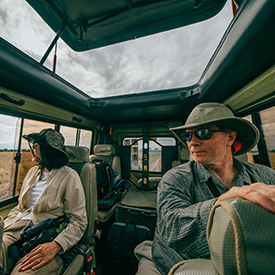
What to Pack for a Safari – 23 Essentials
1. neck wallet.
Keep important documents safe with a neck wallet. As you experience long travel days and inevitably get exhausted, it’s important to keep your passports in one place. This organizer can be worn around your neck to minimize the risk of pickpocketing or losing something essential. It can hold passports, phones, credit cards, and anything else you wouldn’t want to risk losing. It even has RFID-blocking material to stop digital thieves from scanning your credit cards.

View on Amazon.com ➜
2. Insect Repellent Wristbands
Since most safaris will be in Africa, you’ll want to protect your family from regional mosquito-born illnesses, including Zika, Chikungunya, Dengue Fever, malaria, and West Nile. Instead of being under attack from annoying and potentially harmful bug bites, use mosquito repellent to stay ahead of these pests. We like the wearable option instead of respraying toxic fumes all day.
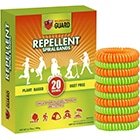
3. Virtual Private Network (VPN)
Many countries in Africa censor the Internet. A good VPN can help prevent your connection from being blocked. Additionally, a VPN makes it extremely difficult for hackers to access your information or steal your private data. Cybercrime is up by a huge percentage in recent years, with over 100,000 attacks in 2023 in South Africa alone.
Since a great deal of your travel time might be spent putting in credit card information and flight details – not to mention passport ID or social security numbers – having a secure connection is critical. NordVPN is our go-to because they are affordable and will protect you with one click.

View NordVPN.com Options ➜
4. Quick-Dry Travel Towel
Not only is it uncertain that your hotel will provide a towel, but it may not be up to your standards of hygiene. In case you have dirty towels (or no towels) bring along your own for the journey. This one is great for hiking since it’s not big and fluffy like hotel towels. It also dries 10x faster than cotton as a more practical microfiber material. We find tons of uses for it along the way!
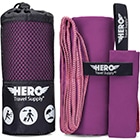
5. Binoculars with Phone Adapter
Africa boasts some of the most majestic scenery that planet Earth has to offer, not to mention its most mysterious creatures. One of the most essential items on your list, after investing so much to get here, is being able to take in the sights clearly. These are high-quality so you can get epic views but still maintain a safe distance. These even have an adapter so you can plug them into your phone for views and live-action screenshots.

6. Universal Power Adapter
You will likely be using major cities as the jumping-off point for your safari, and you will want a power adapter to suit these destinations. In terms of the safari itself, many people opt for glamping or camp resort experiences, and these sites usually offer electrical power as well. Come prepared with a universal power adapter that is suitable for anywhere you go. This one works in 100+ popular countries and comes with a lifetime replacement guarantee.
(Note: If you’re headed to southern Africa, you’ll want to bring a South Africa-specific adapter as well).

7. Travel Insurance for a Safari
Accidents do happen and can be even more common when venturing far from home. Traveling for a safari is not cheap anyway, so why wouldn’t you pay a small amount extra to protect your travel investment? The last thing you want is to pay out-of-pocket for international medical bills, expensive medivacs, lost luggage, or flight cancelations. Being that your domestic provider generally will not cover you overseas (Medicare and Medicaid in particular), you have to protect yourself from bills that would be difficult to recover from.
Faye is our favorite travel provider because they make the process a breeze through their mobile app. It’s probably one of the cheapest aspects of your trip and well worth it for the peace of mind alone! Faye even covers entire trip cancelation, which is very rare for an affordable provider.

Get a quote in less than 60 seconds with Faye ➜
8. Cooling Towel
One thing there’s no shortage of on a safari – is HEAT! The open savannah doesn’t offer air conditioning, but cooling towels are just about the next best thing. Simply by adding water, this magical towel drops to nearly 30-degrees colder than the outside temperature. It’s such a sweet relief on a hot day, and we wouldn’t travel anywhere warm without these. If the effects start to minimize, just add more water and you’re good to go!
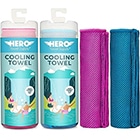
9. High-Quality Filtered Water Bottle
Do not drink the local tap water. It is critical to avoid drinking unsafe water in Africa and many other less-developed areas as well. While many resorts and safari camps offer bottled water, it is best to make sure you have a consistent source of safe drinking water to stay hydrated in the severe heat. This Grayl option is worth the price-tag since it’s such undeniable quality! It will protect you from harmful bacteria, viruses, parasites, microplastics, sediment, chlorine, pesticides, and more.
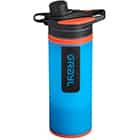
10. Portable Universal Charger
If you are going to be away from electrical outlets for a while, you will need a universal charger to keep your electronic devices fully charged. There are not generally electricity grids in the middle of the savannah, so use this charger to stay on-the-go. It has multiple USB ports so you can charge your devices quickly and efficiently.

11. Motion Sickness Relief
If you’re prone to any motion sickness, the safari land cruisers and game-viewing vehicles can be very bumpy! Use these patches to stay ahead of any nausea. They’re all natural and make a big difference in your comfort level for this exhilarating part of your trip! We also use them on boat rides, driving on windy roads, at amusement parks, and more.
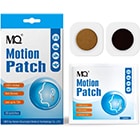
12. Windproof Travel Umbrella
During the summer months especially, rain is common and you’ll want to come prepared with a lightweight umbrella. It’s also brilliant to have for shade protection and just getting out of the sun for a bit on a long day of animal watching! This one is our favorite because it’s good quality and weighs only one pound.
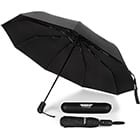
13. Deodorant Wipes
When you are on a safari, it’s not always feasible to take a shower right when you need one. Deodorant wipes are the next best thing. These are refreshing and cooling with scents like mint and cucumber. They cleanse away sweat, dirt, and odors so you can enjoy long days without feeling sticky.

14. Paracord Bracelet
When you are trekking into the middle of the great outdoors, it’s always wise to have a few tools on hand. A paracord bracelet blends style and practicality, providing a few essential tools such as a flint fire starter, emergency whistle, and a compass.

15. Travel Backpack
Safaris often involve side trips, whether that side trip is an extended hot air balloon ride or a jeep drive to catch a glimpse of the Serengeti’s wildebeest migration. Make sure you bring a travel backpack that will carry everything you need for the day (like your phones, water bottles, neck wallet, umbrella, etc).

16. TSA-Approved Luggage Locks
We’ve sadly had something stolen out of our checked luggage. Now, anytime our bags are going to be out of sight or exposed to areas with petty theft – we bring these locks. They can be attached to your suitcase, backpack, or lockers in public areas. They’re also TSA-approved, so security won’t give you any fuss over securing your bags.
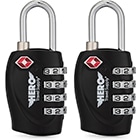
17. Jet Lag Relief
They say that a journey of a thousand miles begins with a single step. Well, a journey to Africa often begins with what feels like a thousand layovers! Jet lag pills will help you be ready to hit the ground running instead of taking days to adjust to the drastic time change. We use them on the way there, and when we return home to get back on track faster.

18. Packing Cubes
Packing your essentials while staying lightweight and organized can be a challenge even for the most experienced of travelers. Use packing cubes to keep everything tidy and well-organized. These come in a variety of colors so every family member can have their own, and even bonus laundry bags to separate dirty and clean items. I can promise that once you try them – you won’t go back!

19. First-Aid Kit
Do not risk a small cut or wound getting infected. While the odds of sustaining a serious injury while on a safari are pretty low, any kind of travel comes with the risk of bumps and bruises. A first-aid kit can help take care of pesky cuts and abrasions and everything you need comes in this compact case.

20. Convertible Hiking Pants
These hiking pants are the perfect safari wardrobe. They allow you to wear longer pants – or unzip them at the knee if you want a cooler shorts-style. It’s nice if hiking and you step in a muddy puddle, you can easily convert these back and forth between shorts and pants. They also have temperature-regulating material to keep you warm or cool, depending on the environment. Smarty pants!

21. Hanging Toiletry Bag
African bathrooms are not generally huge, unless you’re staying in a luxury resort. Regardless of whether you’re in a bungalow or camping outside – this hanging toiletry bag is a game-changer! It can hang anywhere and offer you a built-in storage system for all toiletry items like skincare, haircare, and makeup products. We never travel without ours. It’s one of the best items we’ve come across for consolidating the most regulated items.

22. Activated Charcoal
While traveling to a foreign country, the odds are that you might encounter foods and flavors you haven’t encountered before. In case you get hit with food poisoning or a bad stomach ache – activated charcoal is wise to have on-hand. It is an easy way to help rid your body of unexpected toxins and get back to enjoying your vacation.

23. Camera with Zoom Lens
As an obvious but necessary packing list item, you will definitely want top-notch photos of your safari. Document the moment with this Canon set that includes a versatile kit lens and a powerful zoom lens to capture wildlife in the distance. It will make a big difference to walk away from the trip with images you will treasure for a lifetime, rather than blurry shots on your phone that will likely get lost there forever.

Other Safari Packing List Items
- Discounted tours
- “Just in case” bag
- Windproof/waterproof jacket
- Dustproof camera bag
- Insulated water bottle
- Sunglasses case
- Hand sanitizer
- Travel power strip
- TSA-approved travel-sized bottles
- Polythene-free storage bag
- Citronella soap
- Shampoo bar case
- Flip-flops or sandals
- Waterproof shoe bag
- Lip balm with sunscreen
- Travel umbrella
- Bug bite cream
- Solid shampoo
- Mini hairbrush
- Pocket knife
- Travel laundry detergent
- Clothesline
- Waterproof phone case
- Flotation strap
- Selfie stick
- Memory card
- Flash drive
- Steripod toothbrush cover
- Travel pillow
- Protein bars
- Hat with bug net
- Fleece jacket
- Rain jacket
What to Wear on a Safari
Going on a safari will present you with a range of conditions. In particular, many travelers find it difficult to straddle that line between fending off the heat and the bugs. The bugs will leave you wishing you had better covered up, the heat will leave you wanting to shed longer layers.
The best way to approach this dilemma is to find the perfect blending of the two. During the hottest parts of the day, it is probably okay to wear shorts as long as you properly apply bug spray. During the dawn and dusk hours, when disease-carrying mosquitoes are at their most active, you will want to make sure you are covered by lightweight clothes that have ideally been pre-treated with bug repellant.
Either way, make sure you pack a pair of comfortable shoes with good tread.
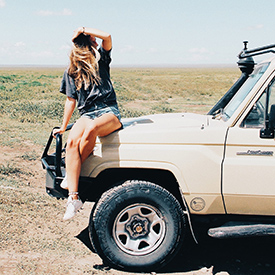
In general, women should wear lightweight clothing that comfortably covers knees and shoulders. This is out of respect for local customs and culture as much as it is an added barrier against bugs and sun exposure.
Lightweight, stylish pants that cover your entire legs and ankles work well. Soft, light materials shirts also work well for staying cool. Keep in mind that darker colors are not only worse for heat but also for attracting mosquitoes. And don’t forget to pack at least one nice dress , as there are sure to at least one day or night where you will be relaxing over a nice dinner at your safari lodge or resort.

For men, wearing gear that is both lightweight and rugged is the way to go. As mentioned previously, avoiding bug bites is also of top concern, so the better the coverage you can get (while staying cool) the better.
Cargo shorts are good to have on hand, as well as at least a few changes of soft, lightweight shirts in both long and short sleeves. A baseball cap works well for staying put on your head during safari rides, but a more stylish brimmed hat can be nice for other sightseeing activities as well. Don’t forget to pack at least one set of nicer pants and a shirt as the opportunity for a nice dinner is likely at some point during your trip.
Packing for the Seasons in Safari
Safari in dry season – april, may, june, july, august, september, october :.
Dry months might be warm during the day but can be deceptively cool at night Convertible zip-off pants and a sturdy pair of sandals can allow you to easily go from one to the other without a lot of hassle. Layers will allow you to also accommodate fluctuations in temperature. Don’t forget a jacket to give you an extra layer of warmth when you need it.
Safari in WET SEASON – November, December, January, February, March:
If are traveling during wet season, keep in mind that road conditions might be muddy, which means your walking conditions will be muddy as well Waterproof shoes are a must. Keep in mind that wet conditions don’t necessarily mean cold, so layers are critical to effectively navigating the fluctuations in temperature. A rain jacket and water-resistant backpack will help you keep your belongings (and yourself!) cool and dry.
Glamping or Camping – In many regions of Africa it can be surprisingly cool at night and in the early morning. Wool is a versatile material that will keep you cool when it gets hot, and hot when it gets cold. Packing other favorites such as t-shirts and your favorite yoga pants are good options as well.
Jeep treks – Lightweight clothes, layers, and a brimmed hat that fits snugly and won’t fly off can all help you enjoy the drive without having to pack too much into your day bag.
What NOT to Bring on a Safari
Heavy luggage is a no-no on most vacations, but this is especially true when it comes to going on a safari. The best way to bring your library of books to wile away the long layover hours is by buying a Kindle or other e-reading device
2. Unnecessary valuables:
There’s really no reason to pack fancy jewelry while you are on a safari, and don’t bring too much extra cash either. Not only is there a risk of theft or loss, but the idea of a safari is to get in touch with nature.
3. Too many clothes:
The best way to maximize your luggage is to pack basic outfits that can work in multiple situations, temperatures, and then to hand wash them on the go if possible.
Not only are drones bulky, they aren’t allowed in most regions where you might be going on a safari. If you bring one where they are prohibited, you run the risk of having it confiscated, never to be seen again.
5. Sleeping bags:
Unless your safari journey specifically entails heavy-duty camping and you are in charge of bringing your own gear, a sleeping bag is unnecessary and will only weigh you down.
6. Plastic bags:
Plastic bags have been banned in many African countries. If you are caught with duty-free plastic bags, you might be asked to get rid of them, or worse, receive a fine.
FAQs about Safaris
1. where should i go on an african safari.

There are many options for first-time safari trekkers, but in general, the top 3 most popular destinations include the Masai Mara in Kenya, Serengeti National Park and Ngorongoro Crater in Tanzania, and Kruger National Park in South Africa. Choosing which one is best varies from person to person.
Flying is the easiest way to reach Moab, with Canyonlands Field Airport just 20 miles outside of town. It’s a very small airport though, and only has flights to Denver, which are pretty pricey. Otherwise, you can fly into Grand Junction, which is just under two hours away, or the nearest major airport is Salt Lake City, almost four hours from Moab. Fortunately, in either case, there’s some beautiful scenery along the way. Some destinations, such as Kenya, have better safari travel structures in place but often come at a higher cost. Others, such as Tanzania, are a bit more rustic in their approach but can be easier on the pocketbook. Each destination has its own unique beauty to offer, and exploring these offerings is half the adventure!
2. What is the best time of year to go on a safari?
Africa is a huge continent, with safaris available in a multitude of countries. Because of this, there is no“one size fits all” answer to figuring out the best time of year to go on a safari. In general, dry seasons are a safer bet as roads tend to be less likely to close down. Additionally, it can be more optimal for spotting animals because the dry season tends to force your favorite “must-see” animals to congregate around the same watering holes and other water sources, which makes them easier for guides to spot.
Perhaps the most important thing to consider is what matters to you in terms of what you hope to achieve by going on a safari. Popular activities such as witnessing the Serengeti migration or a visit to Kruger National Park can vary wildly in what is considered “peak” season. For example, if seeing baby animals is high on your list, November through March is the season for babies at South Africa’s Kruger National Park.
Making a wish list of the experiences that matter most for your safari will help you better decide the best time of year to visit.
3. Are African safaris ethical?

Going on an African safari is ethical as long as you go about it thoughtfully. Watch for tour providers that focus on ethical tourism meant to provide a safe experience for both you and the animals. While getting the perfect selfie next to your favorite animal might be high on your bucket list, consider choosing activities that are easier on the ecosystem, and respectful of the animal’s natural habits. In general, activities focused on enjoying the animals from a distance are best.
4. Are African safaris safe?
As long as you are following the rules and not participating in blatantly dangerous behavior, yes, African safaris are considered very safe! However, it is always wise to check with your government’s travel site to make sure there aren’t any travel advisories in place, as well as to get advice on proper vaccinations.
5. How much are African safari tours?
The cost of your safari will vary widely depending on the time of year and also which destination you choose. Safaris that utilize a more rugged, DIY approach can be surprisingly affordable. Luxury safari lodges, however, can cost up to thousands per person, per day!
6. Are African safaris good for families?

Safaris offer a rich array of activities for families and are suitable for older children. From hot air balloon rides over the Savannah to see amazing animals in real life, safaris provide unforgettable memories and learning experiences. Keep in mind that some tour companies and lodges do have a minimum age requirement of 6 or 8. A widely accepted rule of thumb is that children should be at least age 8 to be able to appreciate a safari fully.
7. Are African safaris good for solo travelers?
Safaris offer an incredible getaway for solo travelers. Watch for resorts and lodges that waive the supplemental fee that often accompanies solo travel. If you hope to achieve solitude, you can book private drives and activities. If you are hoping to meet new friends, you are sure to meet other travelers at your lodge as well, so you won’t be short of people to share the adventure!
8. How do I pay for things while on an African safari?

The odds are that while you are on a safari, you will visit local villages and towns where you will find a vast array of locally made crafts and goods you will want to purchase. It is preferable to pay for these goods in cash, ideally in the local currency. ATMs are available at some resorts but do your research ahead of time to not only get the best exchange rate but to avoid the awkward situation of having to count out unfamiliar money on the fly when you arrive.
9. What are the African safari big 5?
What is called the “big five” while going on a safari in Africa refers to the most wished for sightings, specifically: lions, buffalos, leopards, elephants, and rhinos.


Asher Fergusson
Safari Survival Tips: 20 Dos and Don’ts
I’ll always remember the first time I went to Mana Pools . Our travel group consisted of four English girls, all in their early twenties and all visiting Africa for the first time: me, my sister who was visiting from England, my friend Jackie who, like me, was a volunteer teacher in a rural Zimbabwean school (read about that here ) and her friend Kate, also visiting from England.
Jackie had persuaded a local farmer to lend us his ancient pick up which we were very excited about. Usually we got around Zimbabwe by hitch-hiking or public transport but you couldn’t hitch-hike to Mana Pools National Park , there just wasn’t enough traffic going there.
There wasn’t any public transport either and we definitely couldn’t afford the charter flight which I took on my last visit to Kanga Camp in Mana Pools. Today the $300 return flight from Harare to Mana Pools in a six-seater plane seems like a good deal but that would have been a few month’s salary for me back then. An unthinkable expenses, even if it did turn a seven hour bumpy car ride into a one hour flight.
So having a car of our own was brilliant, even if it was just a beaten up old farm truck. We were filled with youthful enthusiasm, invincible and ready for adventure.
We loaded the pick up with basic cooking equipment and a tent (all borrowed from the same farmer) plus enough food to keep us going for a few days then off we set.
It must have been a long journey with at least one overnight stop on the way but I can’t remember any of that. No doubt the roads were terrible too, but all I can recall is how worried I was that the rusty old jalopy would break down before we got to Mana Pools thus scuppering my dreams of seeing what sounded like the most amazing wilderness area in Africa and all the animals who lived there.
As we bounced over ruts and pot holes with a constant rush of hot air and thick dust flying in the open windows all I could do was pray that we would make it to Mana Pools. It was like the promised land. A mythical place I simply had to get to.
I spent a year in Zimbabwe and visited pretty much the whole country but Mana Pools was the one place I dreamed of visiting most, partly because it was so hard to get to, but also because it sounded magical. This was a place where nature and animals ruled and man could only visit for a few months each year during the dry season. It still is.
But the pickup was clearly not in a good way. It clanked and groaned, barely started a few times and generally made it clear that while it could just about handle driving round the farm looking for lost cows it wasn’t up for days of driving on rutted, pot-hole ridden roads.
I think sheer will power actually got us to Mana Pools though. Finally we turned off the main road and started down the track through the national park that led to the campsite where we would stay.
But half way there was a bitter smell and we noticed smoke seeping out from under the bonnet. We stopped the car, jumped out, opened the bonnet, saw that the engine was on fire and threw the contents of our water bottles on the flames.
Things didn’t look good. We were miles from the main road, just as far from the camp site and stranded on a dirt road in a place famous for its wild animals. It was late afternoon and it wouldn’t be safe to walk to the campsite or back to the road so it looked as if we were truly stuck.
We did the only thing possible. We tried to start the engine again and miraculously it juddered back to life. We drove slowly off in the direction of the campsite, because now we were so close to Mana Pools, I was even more determined than ever to get there.
We got another mile or so down the track before smoke started seeping out of the engine again.
It was soon put out by the remaining water from our water-bottles but this time the pick up would not start again and now we’d run out of water too.
After 60 minutes of anxiety, of debating if we should start peeing in our water bottles already and/or if two of us should walk for help, and if so whether they should head back to the road, or on to the campsite, we heard a rumble.
We stopped arguing and generally carrying on like the frightened little girls we were and we listened, our heads tilted to one side and all our energy focused on deciding if it really was a car we could hear.
It was, and of course the car stopped and the driver rescued us because he had to. You cannot leave four young ladies stranded in the wild with dusk on the way and two thousand predators hiding all around waiting to pounce. Game walks are permitted in Mana Pools but they are not recommended without a guide and never at night.
Our savior took us to the Mana Pools campsite on the banks of the Zambezi and we set up our tent.
So we spent two amazing nights in Mana Pools. It wasn’t exactly care free because we didn’t know how we’d ever be able to leave again and we did know that the farmer would be very angry.
We cooked some horrid camp mush that passed as food and fell asleep exhausted in the hot, cramped tent. It wasn’t long before we were woken by a terrible clashing and crashing of metal. We peeked out heads out of our tent in the direction of the fire where we’d cooked and where the noise was coming form.
In the weak light of our torch we saw a pair of hyena gnashing away at our saucepan and wooden spoon. One of them turned to look at us and his eyes beamed red. We zipped our tent back up tightly and eventually fell to sleep again.
The next day the saucepan was just a mangled piece of metal, as useless as the pick up truck. The wooden spoon had vanished altogether.
There were other visitors too. A hippo came stumbling around the campsite the next night and the farmer’s son arrived the day after that and towed the pick up away.
We were left to scrounge lifts back to the main road from the other campers before hitch-hiking back to school to start teaching again.
It wasn’t ideal but we made it to Mana Pools and we made it home alive.
I did some stupid things while I was on my first safari but I’m not the only one. While I was staying at Mana Pools recently a guide told me he’s seen tourists swimming in the hippo and crocodile-infested Zambezi River which makes me look like a smart traveler.
And I suppose in a way I am. Because I traveled when travel seemed impossible. I kept my eye on my dream destination and I got there, even when it seemed impossible. And, although you could say the trip was a disaster, in so many ways it’s enriched my life with stories of adventure. Crazy stupid stories they maybe but they are stories I’ll always remember.
Here are a few dos and don’ts the next time you go on safari from someone who learnt many of them the hard way along with some extra tips from Sean, one of my super safari guides from Kanga Camp :
1. Don’t park or camp under a sausage tree – those suckers are heavy and death by sausage would be a sorry end.
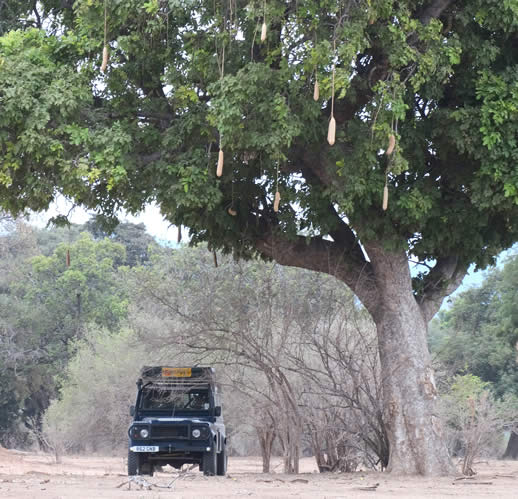
2. Do seek shade for camping , you’ll need it during the heat of the day.
3. Do wear neutral or light colors clothing for your walking safari.
4. Don’t wear vests with trillions of pockets, a safari suit or a pith helmet . Save those white Africa fantasies for a theme party at home. I had a great safari party once with people coming as elephants, leopards and lions but safari suits looks a bit silly out in Africa unless you’re a real life safari guide of course.
5. Don’t put your seat-belt on . There is no windscreen and no windows in most safari trucks and there certainly aren’t any seat-belts. But that won’t stop you for reaching for the seat-belt every time you sit in the truck. It’s a hard habit to break.
6. Do take you rubbish home . Pack it in and pack it out in any national parks and definitely don’t stuff your rubbish down a long drop toilet. That’s about as selfish and stupid as it gets.
7. Don’t forget you’re in Africa and these are real, wild, unpredictable animals . The elephants at Kanga Camp almost seemed tame at times as did the lions but they aren’t so keep well away.
8. Do stay more thank two crocodile lengths away from river banks . Nile crocodiles, like the ones you find in the Zambezi River, can grow up to 14 foot long and pounce twice their body length. Yikes.
9. Don’t swim in the Zambezi River . If the crocs don’t get you the hippos will yet still my guide Sean has seen people swimming in it.
10. Do carry five liters of water per person in hot temperatures . The temperature in Mana Pools will probably be in the forties so you’ll need a hat, long sleeves and suntan lotion as well as lots of water.
11. Don’t walk around at night. Ever. The predators rule at night and even in the day time there could be a leopard in the treetops right above you.
12. Do spray yourself with diluted Dettol to repel teste fly if you’re in the Mopane woodlands . You’ll smell like a public toilet but that’s better than getting sleeping sickness.
13. Don’t get between a hippo and the water, or an elephant mum and her baby.
14. Do have a CB radio in case you breakdown or someone gets sick. Mobile phone reception is patchy at best.
15. Don’t run. Whatever happens don’t run, lions love the chase so if you run they will run after you. Plus you’ll probably just fall over or hurt yourself because there are thorn bushes, underground burrows and fallen branches everywhere.
16. Do take a first aid kit.
17. Don’t leave your lights on in your tent – to conserve energy and avoid attracting bugs.
18. Do keep your tent zipped up at all times – or you might get a nasty surprise waiting for you inside, including but not limited to snakes, lizards, bats and spiders.
19. Don’t hunt . It’s horrible to learn that hunting is still legal and happening all over Africa. I simply cannot understand why anyone would want to shoot and kill a lion, buffalo, elephant or any other wild animal but people do and they can. But just because you can do something it doesn’t mean you should. So please don’t hunt the animals. Love them, don’t hurt them.
20. Do shoot wildly with your camera . You’ll never capture the full beauty of the bush, the silence of the wilderness or the feeling of serenity you get on safari but your photos will give you some small pleasure when you get home again.

Have you got any safety tips or dos and don’ts for people going on safari? Or maybe you’ve got a random what not to do while travelling story to share. Leave a comment, we’d love to read it.
Want Unique Content You Can’t Find on the Blog?
A lot of my writing is sent to subscribers only in the email newsletter subscribers so sign up here now (it’s free) if you’d like to read it. Thank you. I’ll see you there.
Share This Story, Choose Your Platform!
What a story, Annabel! There’s a lot to know, isn’t there! But the beauty makes it so worth it, I can see. Thanks for taking us on this special journey with you.
Oh I love Africa! Lots of fond memories :)
Nice post Amanda. I’d also suggest keeping the noise down. Whisper or even better don’t say anything at all while you are in your viewing spot. In game parks that get a lot of visitors the game gets used to vehicle noise, but can still become skittish around the noise of people talking. Many game drivers will switch of their engine once they reach a good viewing spot. At that point its best not to speak. Just watch. And listen. And be there.
What a great story Annabel! And your tips are super, although there is much to remember on the safety side for Africa, and yes, weren’t we gung-ho and invincible in the olden days? We hitched all around Malawi, and climbed Mount Kilimanjaro with socks on our hands instead of gloves and made it to the top without our guide who escorted people with altitude sickness back down. We’ve camped and had hyenas decimate our pots too, and elephants stride right past our two man tents, oh and don’t get me onto baboons! I loved your story, not just because it was entertaining but because it brought back all these memories for me too :)
Leave A Comment Cancel reply
Save my name, email, and website in this browser for the next time I comment.
Search Blog
- World Travel Guide
- Noosa Local's Guide
Travel Tips
- Funny Travel Stories
- Personal Writing
Lifestyle Tips

Best and Worst Things About Living in Queensland

5 Things I Want to Do in Tanzania

Travel Stories
- What Looks Like French Bread But Isn’t?
- Lessons From An African Witchdoctor
- Naked in Greece
- Top Travel Destinations: What’s the Recipe?
- World's Best Travel Destinations
- 27 Years of Nomadic Living
- Live Your Dream in a Material World
- 52 Exercises: How One Woman Dared to Deal With a Mid-Life Crisis
Advertise | Write for | Legal | Uncopyrights | Links
Hello Kitty 10-Inch Wildlife Plushies are back by popular demand! Get yours before they’re gone - CLICK HERE!
Your Cart is Empty
- $ 0.00 Subtotal
Taxes and shipping calculated at checkout
Enter Gift Message or any Order Notes above.
- Women's T-Shirts & Tops
- Men's/Unisex T-Shirts & Tanks
- Adult Sweatshirts & More
- Adult Plus Sizes
- Accessories
- Bags & Totes
- Kids Apparel
- Girls T-Shirts & Tops
- Boys T-Shirts & Tops
- Kids Sweatshirts & Jackets
- Toddler Apparel
- Baby & Infant Apparel
- Wildlife Care Specialist Uniforms
- Kids Accessories
- Kids Bags & Backpacks
TOYS & BOOKS
- Plush Wildlife
- Eco-Friendly Toys & Plush
- Toys, Puzzles & Playsets
- Zoo Chews & Candy
- San Diego Zoo Wildlife Alliance Press
- Stories of Hope & Inspiration
- Children's Books
- Nonfiction Nature Books
FOR THE HOME
- Kitchen & Drinkware
- ZOO BREW Coffee Subscription
- Water Bottles & Tumblers
- Shot Glasses
- Souvenirs & Collectibles
- Ornaments & Collectibles
- Magnets, Pins & More
- Guidebooks & Calendar
- Canvas Wall Art
- Mosaic Figurines
ICONIC & ECO-FRIENDLY
- Iconic Collections
- Colorful Lion
- Save the Chubby Unicorns
- Gorilla Shadow
- Eco-Friendly
- Eco-Friendly Apparel
- Eco Wood Earrings
- Reusable Products
- Wildlife Collections (A-H)
- Hummingbird
- Wildlife Collections (I-Z)
- Limited-Time Offers
- Wildlife Duo Snow Globes 2 for $25 - ENDS 4/28!
- SDZWA x BRITTO Limited Edition Plush 30% Off - ENDS 6/30!
- Special Offers
- Zoo Animal Plush 2 for $35
- Eco-Friendly Plush 2 for $25
- Rainbow Sherbet Plush 2 for $19.99
- Children's Books 3 for 30% Off
- Stickers Buy 5, Save $5
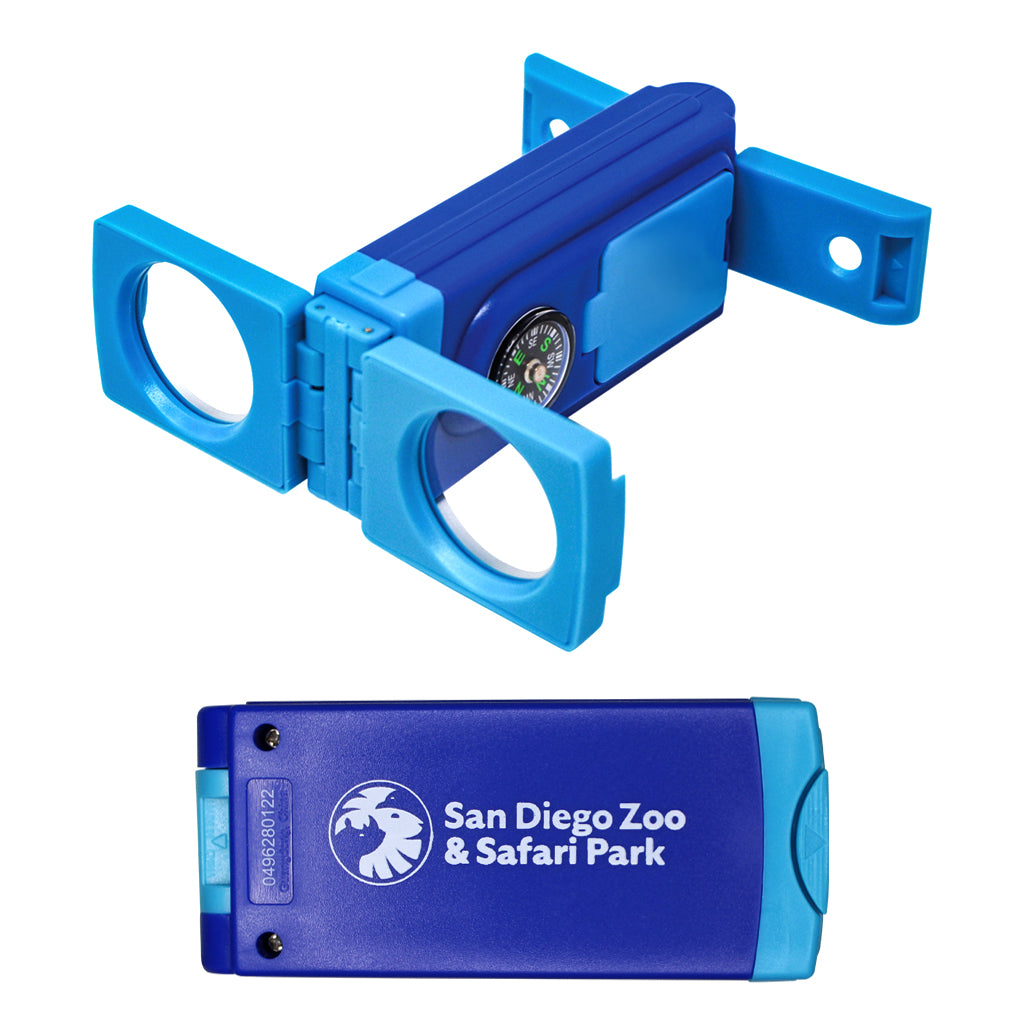
Safari Survival Kit
Get outside and explore! Our Safari Survival Kit includes a compass, magnifier, binocular, and mirror all in one small handy tool. Colorful two-toned blues with our San Diego Zoo & Safari Park logo in white. The tool measures 3 1/2 inches tall and 1 1/2 inches wide, perfect for your pockets.
- Get outside and explore!
- Safari Survival Kit includes a compass, magnifier, binocular, and mirror all in one small handy tool
- Colorful two-toned blue
- Suggested for ages 5 and up.
- The tool measures 3 1/2 inches tall and 1 1/2 inches wide
Notify me when this product is available:
Find out about our newest arrivals and get special offers in your inbox!
Be a Wildlife Ally
Discover a wild array of products at ShopZoo, where every purchase helps save, protect, and care for wildlife. Find out about our newest arrivals and get special offers in your inbox!

Want to know what to pack for your Safari?
What to pack for your Safari
Thank you for using our safari packing list to help you plan and pack for your safari. We are confident that by following this list you will make the most of your incredible safari experience.
If you are on a mobile device please scroll down this page to find your safari packing list or click here .
For more information on this packing list and on what to pack for your safari please use the links below - and we have provided the Safari packing list essentials list just in case you are in a hurry.
- Summary of safari packing list essentials >
- Safari packing list introduction >
- How to use this safari packing list >
- Read the top safari packing list tips from our experts >
- View our handy safari preparation timeline >
- Download our interactive safari packing list pdf here.
What Safari Packing List Essentials to Pack for All Safaris (per person):
- 1 wide-brim Safari Hat
- 1 Safari Beanie for winter
- 3 Safari Shirts
- 1 warm Safari Fleece or Jacket
- 1 optional Safari Dress or Skorts for women
- 2 pairs of Safari Trousers and/or Shorts
- 2 pairs Safari Socks
- 1 pair Safari Shoes
- 2 bottles of Safari Insect Repellent
- 2 bottles of Sunscreen
- 1 large, soft-sided Safari Duffel or Holdall .
- 1 pair of Safari Binoculars : 10x42's are best.
- 1 LED Safari Torch : 200 lumens or more is best.
- 1 Travel Adaptor .
We recommend that you still use the full safari packing list on this page to ensure that you get the right clothing and gear for your safari - and the best advice.
Safari packing list introduction
⊙ This is the ultimate safari packing list and we believe offers the best response to the frequently repeated question "What should I pack for my safari to Kenya, Tanzania, Rwanda, Uganda, Mozambique, Zambia, Namibia, Botswana, Zimbabwe, and South Africa".
⊙ This safari packing list has been a decade in the making and has been made by our safari packing list experts to ensure that you pack the correct safari clothing and gear for just about all types of safaris: game drive safaris, walking safaris, canoe or paddling safaris, horse safaris, gorilla safaris, and mountain trekking safaris. In a sentence: we are dedicated to ensuring that you have the most incredible time on safari and packing the right safari clothing , safari luggage , safari binoculars , and all the other important safari accessories is key to this.
⊙ As a general introduction to the safari experience, most safaris start early in the morning and will be on open safari vehicles with little protection from wind and rain. The rule of thumb is to dress in layers for all activities. For more in-depth information on what to pack for your safari - and why - we recommend that you read through our safari clothing advice , safari luggage advice , safari binocular advice , and our safari accessories advice pages.
Back to the top of this safari packing list page >
How to use this safari packing list
⊙ This packing list calculates the total number of items you will require for the number of men, women, and children you have indicated above. Simply divide by the number of men, women, and children should you wish to work out the number of items required on a per person basis or, of course, set the number to one for each in the form above.
⊙ Please also note that if your safari is longer than 12 days - and if you will have a laundry service available on your safari - that you should only take the recommended number of items for a 12-day safari or you will run out of space in your safari luggage.
⊙ To find out what our experts have to say about each recommended item, please simply click on "more info" and following the advice link. We have also included accessories you may need for add-on safari activities such as gorilla safaris, plus everything else you will need to remember to pack in your bag.
⊙ Please also read our guidelines for packing for a safari by visiting our expert safari packing advice pages too.
Top safari packing advice from our safari experts
When packing for your safari, select safari clothing which offers some or all of the following six key travel garment technologies:
- 1. Safari clothing which is easy to pack, dries quickly, and wicks moisture away from the skin;
- 2. Safari clothing which offers a built-in insect defence . Insist on seeing proof that the built-in anti-insect treatment has been proven to work by asking to see the laboratory test results ;
- 3. Safari clothing that offers protection from the sun . This will be shown as an SPF rating. 50+ is the highest rating available today;
- 4. Safari clothing that is lightweight, but which also has built-in ripstop for added strength;
- 5. As we all prefer to smell fresh, select safari clothing that uses an anti-microbial or anti-bacterial fabric. This also means that you will be able to wear the same safari clothing for longer and so pack less and travel lighter.
- 6. Add to the protective performance of the safari clothing which you take on safari by packing a wide-brimmed, packable safari hat , an effective sunscreen, and insect repellent which has been proven to work to spray onto your safari clothing, safari hat, and skin.
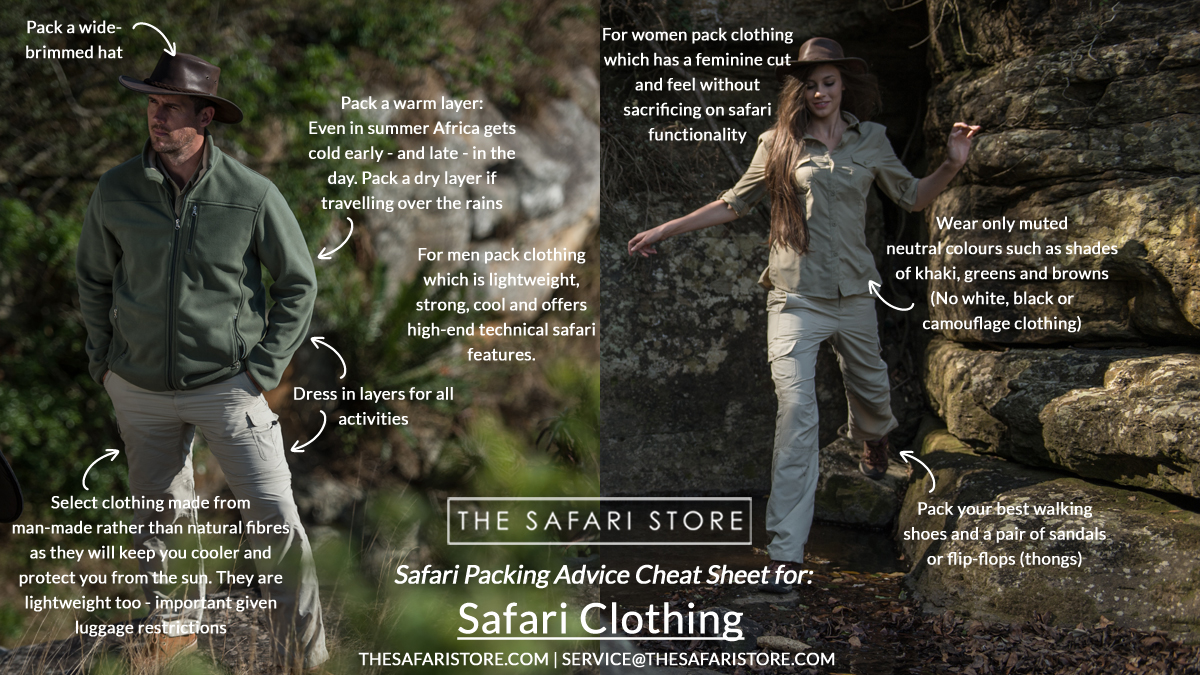
- Use our safari clothing packing advice guide image above for quick, handy tips on what clothing to pack for your safari. Click on the image or click here to view a larger version of the image.
Safari Packing List Pre-Departure Timeline
2 to 3 months before departure ⊙ Visa: If you require a visa and want to get it beforehand, make sure that you apply for the visa as soon as possible. ⊙ Passport: Check that your passport has sufficient pages as most African countries require two blank pages or more, and that your passport does not expire within 6 months. Apply for new passport if needs be. ⊙ Medication: Ensure that you visit your doctor and tell him where you are going. He will then advise you on malaria prophylactics, and other injections or medication that is necessary for your trip
8 Weeks Prior to Departure ⊙ Pay: Make sure that you have settled your balance due for your holiday with your tour operator. ⊙ Safari supplies: This is a good time to also contact The Safari Store for advice on what to pack, and to obtain your safari essentials (as above) in good time. ⊙ Re-confirm: If travelling independently, you must go through your itinerary, check that all flight times (including dates) coincide with your holiday dates, and contact all lodges, camps, hotels, transfer, private guides & car hire companies to re-confirm your holiday details ⊙ Pets, houses etc: Make sure you have made arrangements for your pets, booked a house sitter, and any other arrangements you may need to make for post, services and so forth.
4 Weeks Prior to Departure: ⊙ Departure-day planning: A smooth departure day takes 3/4 of the stress out of your holiday. Make sure that you arrange parking at the airport, start looking into taxis or trains, and book where necessary. ⊙ Travel money: Work out what you are going to do to pay for tips, purchases, extra tours etc while travelling.Arrange cash, credit & debit cards, travellers cheques accordingly (travellers cheques tend to be a pain to use in most parts of Africa - cash and credit cards are best! Take small denominations in cash in US Dollars - US$1, 5, 10 & 20 for tips and sundry purchases).
Share your safari packing list
This is your tailored safari packing list for 1 woman, 1 man and 1 child for 9 days, click here to adjust the number of travellers or number of days, women's safari clothing to pack for your safari, 4 x women's safari shirts more info, 3 x women's safari trousers and/or shorts more info, 1 x women's safari jacket or fleece more info, 1 x women's wide-brimmed safari hat more info, 3 x women's safari dress(es) and/or skorts more info, 4 x blister-proof socks for walking safaris more info, 1 x safari belt more info, 1 x women's safari beanie & scarf more info, 2 x women's safari shoes (walking shoes + camp shoes) more info, men's safari clothing to pack for your safari, 4 x men's safari shirts more info, 3 x men's safari trousers and/or shorts more info, 1 x men's safari fleece or jacket more info, 1 x men's wide-brimmed safari hat more info, 1 x men's safari beanie & scarf more info, 2 x men's safari shoes (walking shoes + camp shoes) more info, kid's safari clothing to pack for your safari, 4 x boy's and girl's safari shirts more info, 3 x boy's and girl's safari trousers and/or shorts more info, 1 x boy's and girl's safari jacket or fleece more info, 1 x boy's and girl's wide-brimmed safari hat more info, 1 x boy's and girl's safari beanie & scarf more info, safari shoes and socks for children more info, safari luggage, 3 x large soft-sided safari holdall or duffle more info, 3 x small safari bag for game drives, walks, and safari activities. more info, 3 x collapsible luggage trolley more info, 3 x safari washbag more info, 3 x travel wallet more info, safari binoculars, 3 x safari binoculars more info, 3 x sets safari-suitable camera and lenses more info, safari accessories, 7 x insect repellent (africa-tested) more info, 6 x safari-suitable sunscreen more info, 3 x sunglasses more info, 3 x safari torch/flashlight more info, 3 x travel adaptors more info, 3 x spare batteries, chargers, memory more info, specialist safari clothing and gear to pack, 6 x anti-chafe tights for walking & active safaris more info, 3 x pair of gardening gloves for gorilla safaris more info, 3 x dry-bag for water-based safaris more info, 3 x pair of ankle gaiters for walking safaris more info, general clothing to pack for your safari, 6 x non-safari shirts for travel and around the camp more info, 6 x casual trousers and/or shorts more info, 7 x casual shirts and/or t-shirts more info, 3 x swimming costume or trunks more info, 12 x underwear more info, 3 x pyjamas more info, 3 x kikoy or sarong more info, gym gear or sportswear more info, seasonal safari clothing to pack, 3 x waterproof safari jacket for the rainy season more info, important items to pack for your safari, passports with any required visas more info, health card and insurance details more info, air tickets & vouchers more info, credit card more info, calculator more info, money pouch with some cash in it more info, prescription glasses & hard glasses case more info, safari reading material more info, super glue more info, toiletries to pack for your safari, malaria prophylaxis for malaria areas more info, motion sickness pills more info, lip balm more info, shampoo/conditioner more info, deodorant more info, toothpaste and toothbrush more info, dental floss more info, hair brush / comb more info, electric / hand razor more info, emery boards, tweezers, etc. more info, hand & body lotion more info, ladies' hygiene supplies more info, contact lenses and fluid more info.
This website uses cookies for it's shopping basket, you must have cookies enabled in order to use this site.
- +255766657854
- [email protected]
- Arusha - Tanzania
- Authentic African Safaris & Kilimanjaro Treks

3 Days Tanzania Lodge Safari
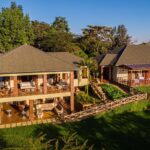
- 2 Days Tanzania Lodge Safari

4 Days Tanzania Lodge Safari
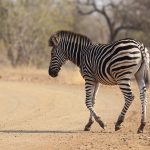
3 Days Tanzania Budget Camping Safari
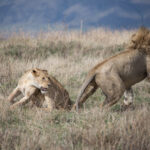
7 Days 6 Nights Walking Safari
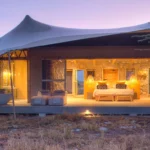
- 7 Days Tanzania Tented Camp Safari
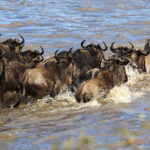
- 6 Days Tanzania Migration Safari
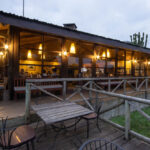
6 Days Tanzania Lodge And Luxury Tented Camp Safari
- Kilimanjaro Join Group Departures
- Tailor-Made Safari
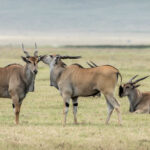
Ngorongoro Conservation Area

Mkomazi National Park

Lake Manyara National Park

Serengeti National Park

Kitulo National Park
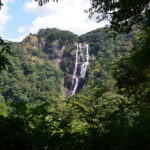
Udzungwa National Park
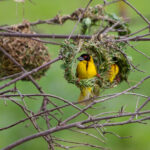
Selous Game Reserve

Ruaha National Park
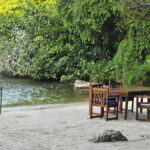
Rubondo Island National Park

Katavi National Park

Mahale National Park

Gombe Stream National Park
Blog Safari Survival: Essential Tips for Your African Adventure
- February 25, 2023
- No Comments
Safari Survival: Essential Tips for Your African Adventure
Planning a safari can be an exciting and rewarding experience, but it’s important to be prepared for the unique challenges that come with travelling to the African wilderness. From dealing with extreme weather and unpredictable wildlife to navigating unfamiliar terrain and cultural differences, a safari can test even the most seasoned traveller.
To ensure a smooth and enjoyable trip, here are a few essential tips for safari survival:
- 1. Pack wisely. The key to packing for a safari is to be practical and prepared for any situation. In addition to your usual travel essentials (passport, sunscreen, insect repellent, etc.), you’ll need to bring items like a hat, sunglasses, long-sleeved shirts and pants, and sturdy shoes to protect you from the sun and insects. You’ll also want to bring a flashlight, a first-aid kit, and a water bottle to stay hydrated in the hot, dry climate.
- 2. Know your destination. Before you leave, familiarize yourself with the local culture, customs, and language of your safari destination. This will help you respect and appreciate the people and places you encounter on your trip. It’s also a good idea to research the wildlife you’ll be seeing and the conservation efforts in the area.
- 3. Stay healthy. A safari can expose you to new diseases and illnesses, so it’s important to take precautions to protect your health. Make sure you’re up to date on your vaccinations and consider getting additional ones for diseases like yellow fever and typhoid. You should also bring any necessary medications with you, as they may not be readily available in remote areas.
- 4. Be flexible. A safari is an adventure, and sometimes things don’t go as planned. Be open to changing your itinerary if necessary, and be prepared for unexpected delays or detours. This can be frustrating at times, but it’s all part of the experience.
- 5. Respect wildlife. A safari is a chance to see some of the world’s most incredible animals up close, but it’s important to remember that they are wild and potentially dangerous. Follow your guide’s instructions and stay a safe distance away from the animals. Don’t feed or touch them, and avoid making loud noises or sudden movements that could startle them.

To sum it up, a safari can be a thrilling and unforgettable experience, but it’s important to be prepared for the unique challenges that come with travelling to the African wilderness. By packing wisely, familiarizing yourself with your destination, taking care of your health, being flexible, and respecting the wildlife, you can ensure a smooth and enjoyable trip. Whether you’re a seasoned traveller or a safari novice, these tips will help you have a safe and memorable adventure in Africa.
Leave a Reply Cancel reply
Your email address will not be published. Required fields are marked *
Save my name, email, and website in this browser for the next time I comment.
Featured Post
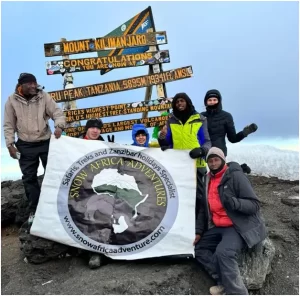
Climbing Kilimanjaro Sustainably with Snow Africa Adventures as a KPAP Member
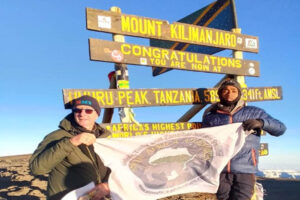
Conquer the Roof of Africa – Climbing Mount Kilimanjaro with Snow Africa Adventures
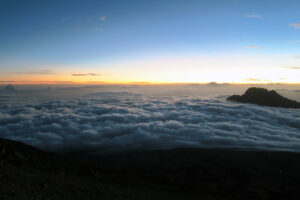
How Much to Climb Kilimanjaro
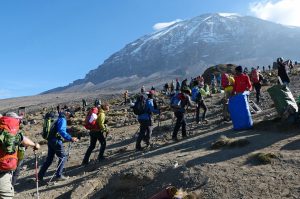
How High is Kilimanjaro Mountain
Safari packages.

- +255 766 657 854
- MEC House, Plot no 161, Second floor, Mianzini Area, Arusha Tanzania
Safari & Tours
- 5 Days Tanzania Luxury Safari
Kilimanjaro
- 7 Days Rongai Route
- 7 Days Machame Route
- 8 Days Lemosho Route
- 6 Days Machame Route

- Booking Terms & Conditions
We are proudly member of

- Crafted by Timeless International
Join Eric Church, Lainey Wilson, Lynyrd Skynyrd & Riley Green at the F&S Music Fest in South Carolina. Tickets on Sale Now!
FIELD & STREAM+
- Join 1871 Club
How to Pick the Right Guns and Gear for an African Safari
After 20 safaris, our shooting editor has dialed in his shortlist of the best gear to bring on a hunting trip to Africa
By Richard Mann | Published Mar 27, 2023 12:12 PM EDT

We may earn revenue from the products available on this page and participate in affiliate programs. Learn more ›
One hundred years ago, hunters on safari in Africa needed to take lots of gear with them, including everything from guns to tents. In some cases, a lot of the outfitting was conducted after arrival in Africa. Times have of course changed, and today your outfitter and their staff will take care of almost everything should you decide to take a trip to Africa. I’ve done 30-day safaris and only brought a rifle case, a standard suitcase, and a backpack. The truth is, you’ll actually need a lot less gear than you think, but amongst that gear are some items you must have. After 20 safaris, I have a reasonably good idea of what that list should include.
The Best Clothes to Pack for an African Safari
You’ll need one set of travel clothes to wear to and from Africa. A good addition would be a travel or photographer’s vest so you can keep personal items such as your wallet, passport, travel paperwork, specific medicines, and such close at hand.

Because your outfitter will do your laundry every day, two to three sets of hunting clothes are plenty; the type and style will mostly depend on the time of year and the location you will be hunting. Remember, Africa is upside down from America, the further south you go, the colder it will be.
In most locations—between May and September—cargo-style pants or shorts and a light button-up shirt—long or short sleeve—will suffice. I really like the trim-fit, pocket-laden Bushcraft pants from Kryptek for hunting (camouflage is not necessary). Add a good medium-weight jacket for cool mornings and evenings, and a pair of leather or tight-fitting tactical gloves because you may end up crawling on a stalk and will need to move the prickly stuff out of the way.
Bring the Right Shoes
A common pair of low or ankle boots for travel and to wear around camp are a must. Having an extra set of shoes will allow your hunting boots to breathe each evening. For hunting boots, I’ve found nothing can compare to those from Courteney for the African bush. They are made from buffalo hide, rugged, amazingly comfortable, and will keep thorns out of your feet. They’re available from several retailers in the States. Whatever you do, go with a full leather boot and avoid boots with mesh sides that allow the sticky things to find the tender skin of your feet.

Gaiters are nice to have, too. You’ll be walking in high grass, sand, and gravely ground. Grass seeds, sand, and pebbles can find their way inside your boots and make walking uncomfortable. Alternatively, a high-top boot like the Courteney Jameson can help with this, but I’d still wear gaiters unless I was wearing long pants.
The Best Guns & Cartridges for an African Safari
There is this misconception that African animals are harder to kill than whitetail deer or elk. It is a complete case of misinformation, founded in part by myth and in part because many first-time safari hunters tend to shoot poorly when under the gaze of a professional hunter and tracker. You do not need a magnum for Africa unless you’re after dangerous game.

As evidence, on my wife’s first safari, she took gemsbok, wildebeest, and impala—all with one shot—using a 243 Winchester and 85-grain Nosler Partitions . I’ve taken most of the plains game in Africa very efficiently with a 308 Winchester. Any cartridge in this class will work wonderfully. This is partly because your PH will work to get you inside 300 yards, and partly because proper shot placement combined with a good bullet has more to do with killing than what’s written on the headstamp of a cartridge. Of course, for buffalo and the like, you’ll find that there are minimum caliber or energy requirements. These usually start with cartridges like the 9.3x62mm Mauser or the 375 Holland & Holland .
Also, you can legally hunt with a suppressor in Africa, and it is not complicated to get it in and out of the country. Your PH will thank you for it, and many people shoot better with them.
The Best Optics for Hunting in Africa
The importance of quality binoculars cannot be overstated. However, I think the mistake most African hunters make is to select binoculars that are too large. I prefer compact binos like the Swarovski CLs . They won’t tug on your neck, they’re light enough to use with one hand, and 8X is plenty of magnification. If you want to bring range-finding binos, that’s fine, but understand ranging is your PH’s job and you should be focused on shooting. While hunting several species like kudu, a spotting scope can help, but go with a high-quality, small, and lightweight option.

For your riflescope, again quality is important. If your riflescope goes belly up halfway through your safari you’re in a bad situation. I’d strongly suggest avoiding cheaply-made optics. A moderate power range is best; the old 3-9X riflescope is hard to beat. However, with today’s riflescopes that have an 8X zoom factor, like the Swarovski Z8i , something with a 2-16X magnification range is fantastic.
Extra Hunting Gear to Bring to Africa
While you may not need much in the way of clothing, there’s some gear you should consider bringing. If you have any prescribed medications, bring them and put them in your carry-on; there’s no guarantee your checked luggage will arrive the same day you do. Sunscreen and bug spray are a good idea, especially in the African summer. Sunglasses and a hat are wise choices too, and I prefer a wide-brimmed hat to a ball cap.
A knife is a good idea for sure, but you don’t need a big knife. A pocket knife or a small fixed blade like the Montana Knife Company’s lightweight Speedgoat will suffice. What you might need more than a knife is a Leatherman or multitool and a kit for rifle cleaning and maintenance.
A flashlight and headlamp should be considered mandatory, and with the current electrical load sharing in Africa, a camp light too. Speaking of electricity, you’ll also want an American plug adapter to charge any electrical devices you might have, along with a compact battery pack just in case.
Rifle accessories include a good carry strap or shooting sling, and either shooting sticks or a tripod. I’ve become addicted to the Spartan tripod system because it’s so light, and I can use it for shooting, mounting my spotting scope when hunting kudu, and as a mount for my camera or smartphone.
Throw in a small personal first aid kit, and if you use tobacco—especially chewing tobacco or snuff—take all you’ll need with you. With today’s smartphones, a camera is not an absolute necessity. However, you may want to take photos at distance. If that’s the case, a good DSLR or mirrorless camera with a 400mm lens will yield great images.

The Best Way to Book Your Travel for an African Safari
Booking a flight to Africa is as easy as booking a flight anywhere else. However, if you’re traveling with firearms, there are some additional considerations due to the strict gun laws in South Africa. I suggest hiring some assistance.
Since 2006, I have used African Odyssey (866-486-9351/[email protected]) for all of my travel to South Africa. Not only are they only a phone call or e-mail away if I have issues or need to change my flights. They can arrange a meet and greet at the airport, assistance with firearms permitting, and lodging when necessary. I wouldn’t consider going on an African safari without the assistance of a travel agent that has experience with hunters.
Read Next: F&S Classics: Ghosts of Africa
Bring the Right Attitude
The most important thing you can bring to Africa is a good attitude and a willingness to learn and take direction from your professional hunter. The lifestyle in Africa is a bit different from in America; there’s no hustle and bustle. While you are there, you’re on African time, and by that, I’m not talking about the time difference. It’s best to chill out.
With a proper outfitter, you’ll also be well tended to, so be prepared to let them wait on you a bit. Let the trackers handle the loading, dressing, and skinning of your game. Sure, you can participate if you want. Because I’m continually testing different bullets that’s something I tend to get involved in. But you’re paying for preferential treatment, and you might as well enjoy it.
Also, be prepared to start planning your next safari before you return from your first. There’s something about the combination of the morning coo of a dove, brilliant African sunsets, the red dirt, and the magic of it all that will bite you hard and embed itself deep within your soul.

Richard Mann was born and raised in West Virginia and has hunted from the Montana mountains to the green hills of Africa. In 2015, Mann began contributing to Field & Stream to cover guns, ammunition, ballistics, and hunting. In 2022, he was named as the brand’s Shooting Editor.
Want More of the Great Outdoors?
Stay adventure-ready with outdoor news that keeps you informed, not spammed.

Hunt Doctors – Packing A Survival Kit
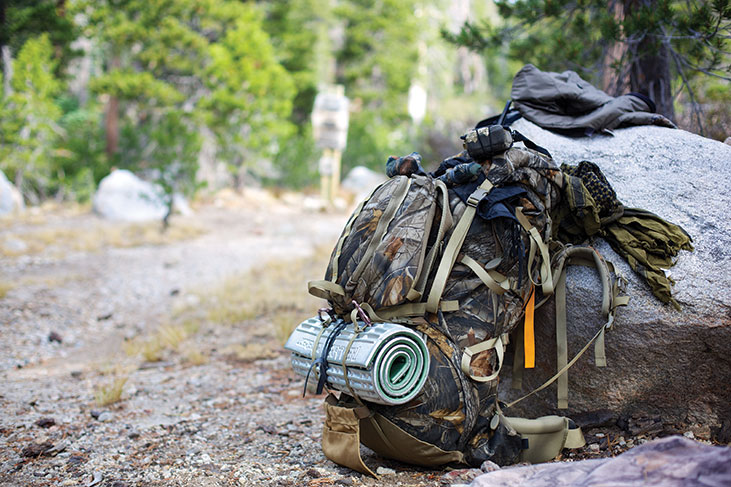
A survival kit covers six necessary elements: food and water, communications, navigation, first aid, fire and shelter. When Mother Nature is at her worst, you will still be able to eat, treat an injury, signal for help, stay warm and protect yourself from the elements.
“There is a rule of threes for survival: three minutes without air, three hours without shelter, three days without water and three weeks without food,” said Dave Keaveny, medical operations specialist at Global Rescue and an advanced wilderness EMT.
A survival kit is intended to meet more primitive needs, such as fire, water and shelter, said Adam Bardwell, medical operations supervisor at Global Rescue .
“You should pack items that are durable, long lasting and versatile,” said Bardwell.
For example, paracord can be used to secure a tarp to a tree for shelter, gutted and used as a fishing line, woven into a net — the list is endless, said Bardwell.
“It is not about how long a kit should last, but how long you can survive on the kit,” said the medical operations expert.
Survival kit items are typically designed to do one or several things in the wilderness. A space blanket could be used for warmth, but the reflective side could also be used as a signaling device. A Leatherman includes all the tools you might need: needle-nose pliers, regular pliers, hand wire cutters, a combo knife, a bottle opener, a large screwdriver and a locking-blade knife. There are even outdoor knives with a built-in LED flashlight, magnesium fire starter, window breaker and seatbelt cutter.
“Items with more than one purpose or fall into multiple categories of survival are more practical, and save weight and room,” said Harding Bush, former Navy SEAL and security operations manager at Global Rescue. “A multi-blade folding knife falls into nearly all the categories — the saw can be used to cut branches for a temporary shelter or fire for signaling or to prepare food, and the tweezers can be used for first aid.”
Do not underestimate the potential for a survival situation. If you are traveling to a remote area, you must be prepared for an injury, getting lost or having your time in the bush unexpectedly extended.
“Proper planning for these scenarios can make the difference between life and death,” Bardwell said.
If your trip into the wilderness is well planned, balanced with your ability and you have the right equipment, what may usually be thought of as a survival situation merely becomes a short delay or an inconvenience, said the experts.
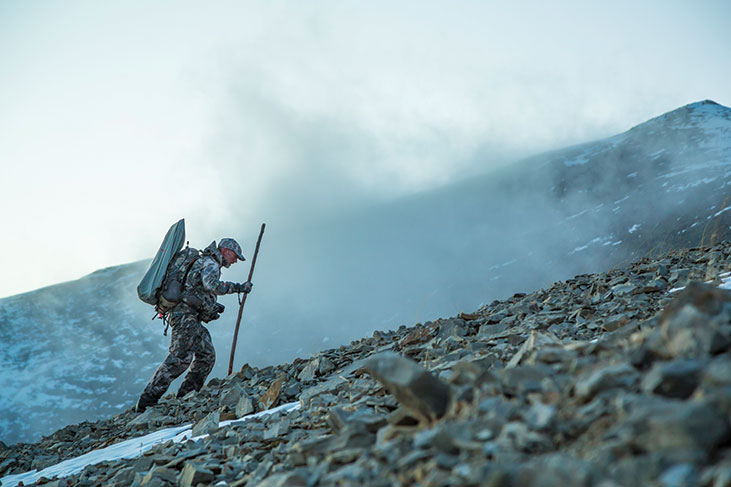
Are you ready to build your survival kit based on your destination, activity and season? Here are 20 items recommended by our travel and safety experts.
1) Aluminum Cup. Need to melt snow into water? Need to boil water? An aluminum cup will come in handy. Some canteen kits come with a heavy gauge aluminum cup while others are designed to fit over a 1-liter water bottle. A stainless-steel water bottle is also an easy way to boil water in a hurry, right in the water bottle. A fire-safe pot is durable multiuse, and can be used to purify water, cook and collect water.
2) Bivy Sack. “A Bivy sack is a perfect, lightweight emergency shelter for when you find yourself spending an unexpected night under the stars,” said Jeff Weinstein, operations supervisor at Global Rescue.
3) Communication Device. Most everyone has a cell phone. If you are traveling overseas, make sure you have a local SIM card, a cable and adapter and a battery bank. Going remote? Consider a two-way satellite communication device, like a Bivy Stick or a Zoleo device. They feature SOS buttons that directly link to the appropriate emergency resources, including your travel protection provider.
4) Duct Tape. Duct tape, also known as a survivalist’s best friend, can be used to stabilize a limb, patch a leaky tent, keep food bags closed, or twist into rope or loops to hang items from your backpack. Experts recommend bringing about 20 feet and wrapping it around your water bottle to minimize its size.
5) Emergency blanket. Wool is hands down everyone’s favorite material to stay warm even if you get wet. Space blankets made of lightweight Mylar might be easier to pack and can double as a reflective device. No matter what you bring, the key question: will it hold in body heat?
6) First Aid Kit. A stripped down first aid kit would include the bare essentials: a Sam splint, some Ace bandages and gauze pads of various sizes. Merola and Weinstein also recommend a tourniquet, a compression device that could be a lifesaver when you need to stop the flow of blood.
7) Fire Starter. Fire is a top priority in a survival situation. There are many ways to start a fire. “Weatherproof matches, lighter, tinder, magnifying glass, flint and steel, magnesium bar or a durable reusable fire starter,” said Garrett Dejong, senior medical specialist at Global Rescue. Pack the fire starter only if you know how it works, and you’ve practiced with it at home.
Consider your destination and choose the most appropriate type of glove. Earthquake prone environment? Think work gloves in case you have to move debris. Cold weather? Waterproof mittens will keep your fingers warmer. Hiking or trekking? Gloves should combine warmth, waterproofing, dexterity, durability and usability. Having an extra pair is always a good idea.
9) High-calorie Food. Don’t just pack any food in your survival kit. Pack high-calorie food. You need a blend of protein, fat and carbs. Energy bars are a good choice. Look for options with high protein, like an RX Bar with 12 grams of protein. Look for real ingredients, like Larabars with dates, fruit and nuts. Bouillon cubes — either veggie or meat stock — have a two-year shelf life. You’ll be able to stay hydrated, have a small amount of nourishment, and the warmth of broth is a morale booster. Other ideas: trail mix, jerky and freeze-dried meals.
10) Light. Flashlights are usually the go-to light source when you are out after dark. Consider a hand-crank version if you don’t want to lug around extra batteries. Even better: a headlamp, which leaves your hands free. Chemical light sticks, found at any dollar store, are small and easy to pack.
11) Navigation tools. No matter how well you know the area or terrain, mistakes can be made. Never leave home without navigation tools, including a GPS unit with cellular or satellite coverage, a map and a compass. “GPS and smartphone navigation apps are a good idea, but batteries die and machines break,” Bush said. “Know how to use a map and compass. Review the map and your location before setting out.”
12) Over-The-Counter Medications. What over-the-counter medications do you take regularly? Add a small supply of pain relievers, antacids or decongestants to your first aid kit.
13) Paracord. Also known as 550 cord, it’s a must-have in Bardwell’s survival kit. “It is extremely versatile, lightweight and cheap,” he said. And the uses are endless: You can create a bow drill for fire, snares for trapping, weave a gill net, hang a bear bag, or take it apart (gut it) for the smaller strings inside the outer covering to use as fishing line.” Add 50 feet to your survival kit.
14) Signaling Devices. You’ve tried cell, satellite and radio communication. What’s left? A mirror or a space blanket with a foil side to reflect light (three flashes is the international distress signal) and attract the attention of another person, vehicle or airplane. The loudest whistle you can find will alert search and rescue to your location.
15) Tarp. “A tarp makes a great improvised shelter,” Bardwell said. “They are lightweight, durable, waterproof, easy and quick to set up.”
16) Travel Protection Membership. Help is just a phone call away if you have a travel protection services membership. With no distance requirement, Global Rescue services are available whether you’re close to home or on the other side of the world. We get you from the point of illness or injury to the nearest medical facility.
17) Utensils. You’ve got the multi-tool, but do you have a mealtime multi-tool? An eating utensil — used for cooking, eating or other useful purposes — should include a knife, fork, spoon, can opener or bottle opener. Many of them fold and unfold, and some come in their own storage pouch.
18) Water Treatment Supplies. Don’t just drink from any nearby water source — be sure to filter and purify the water first. “Water purification can occur through the use of chemicals (such as chlorine and iodine), by boiling water or by utilizing UV rays,” Weinstein said.
19) Zip Bags. Zip bags are a great way to keep items waterproof. Make sure the brand has a sturdy zipper and thicker plastic. GearJunkie lists all the uses for this versatile survival kit item: store toilet paper, keep electronics dry, organize snacks, keep fire starters dry/organized, pack out trash and catch rainwater.
Safari Club International highly recommends purchasing a Global Rescue membership prior to your next trip. Single trip, annual and family options are available. For more information, visit globalrescue.com/scimag or call (617) 459-4200 and mention you’re a Safari Club International member.
Related Posts

Apr 11, 2024
Warthog Life Insurance

Mexico Lindo

Apr 1, 2024
Mountain Memories
- 50th Anniversary Logowear
- Celebrate With Us!
- Research Library
- Take Action
- Member Benefits
- About Rewards Program
- Hunter Information Service
- Hunter Hotline
- Gift a Membership
- About Chapters
- Chapter Auctions & Events
- Join a Chapter
- Chapter Map
- Share The Impact Outfitter Benefit
- Submit an Entry
- Game Birds of the World
- Measuring Program Resources
- Discounts for Guides and Outfitters
- World Hunting Awards
- SCI Methuselah Award
- Book Your Hotel!
- Conservation Programs
- SCI Foundation
- African Wildlife Consultative Forum (AWCF)
- SCIF Bear Strategy
- SCIF CWD Strategy
- SCIF Leopard Strategy
- Outdoor Education
- Conservation News
- You are here:
10 Things You Must Pack for Your Safari
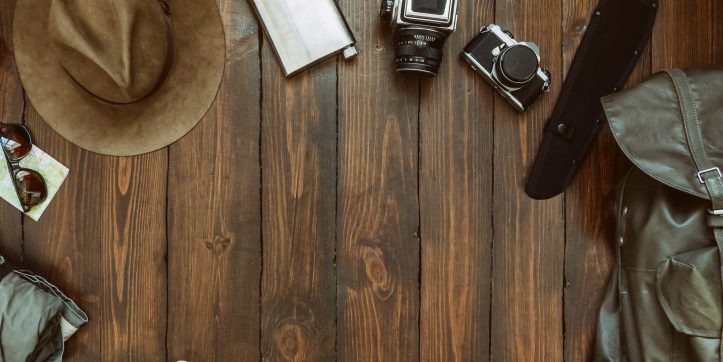
Patrick has been an Africa travel specialist, based in Australia, for over 10 years and prior to that was a safari operator in Mana Pools in Zimbabwe.
You’ve waited months for your safari to finally come around. And now you have to decide what you must pack for your safari. Decisions, decisions, decisions. SafariBookings is here to help. Below are a few of our tips.
10,766 African Safaris
1. Passport, Itinerary, Travel Insurance Docs & Etickets
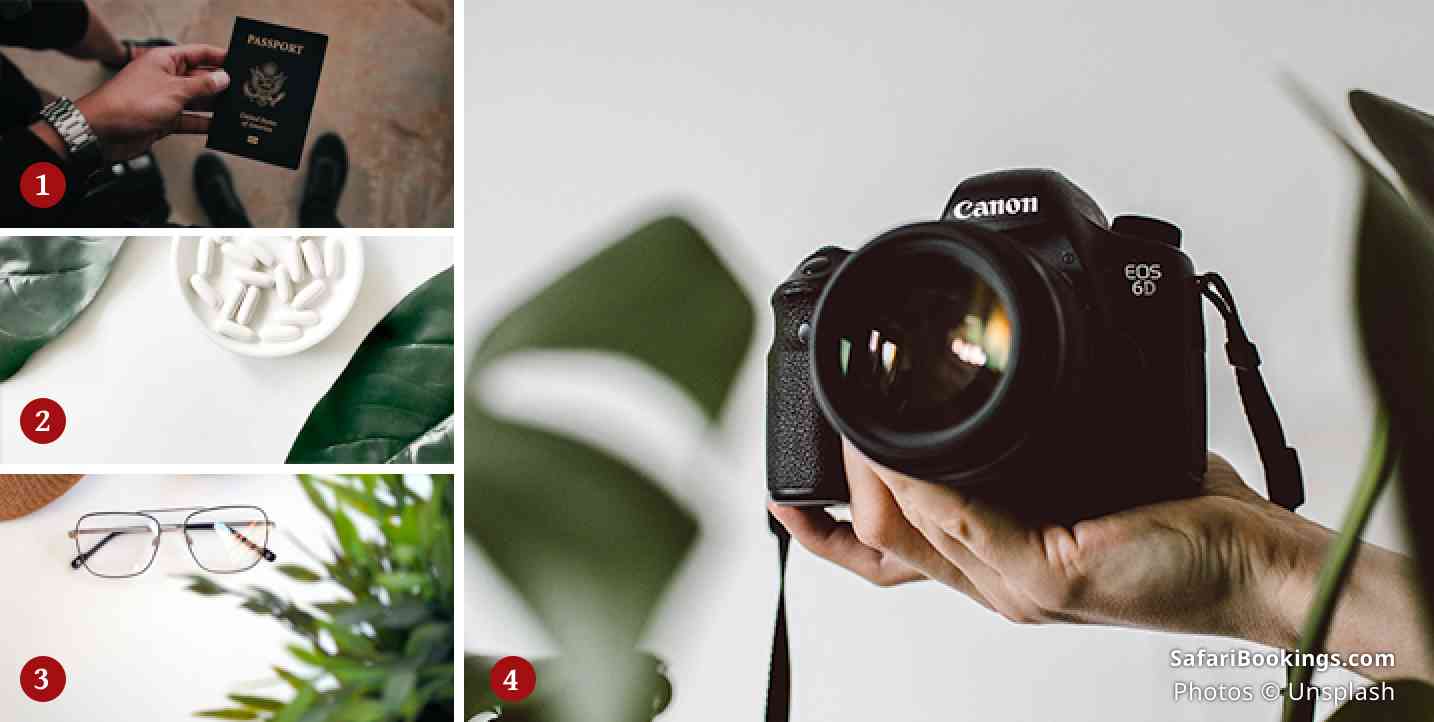
It seems obvious, but we would be remiss if we didn't put this at the top of the list of what you must pack for your safari.
2. Prescription Meds
Remember to put your prescription medications in your hand luggage (in case your check-in bag goes astray... it happens!)…and make sure you have enough of each type to last your entire safari.
3. Prescription Glasses (Sunglasses, Hat, Sunblock Et Al)
If you wear prescription glasses, be sure to pack more than one set (in case you lose one or they get broken). You will be outdoors for much of the time, so be prepared. Pack a hat, sunblock, long sleeves, and lip balm.
4. Camera, Video and Binoculars
Whilst most people will remember to take their camera and/or video (or will use their mobile phone), not everyone thinks they need to take binoculars! Binoculars are ESSENTIAL for optimum wildlife viewing on safari (and a GOOD pair of binoculars will make a BIG difference to your safari). We strongly recommend a pair of binoculars on safari. Get the most expensive you can afford (at least 8x or better still 10x magnification).
Africa is a photographer’s dream. Not only does the boundless wildlife come in all shapes and sizes, but the continent is also blessed with stunning landscapes, colorful people and fabulous light! Don’t miss out. Buy a camera, if you don’t already have one.
5. Clothes & Toiletries
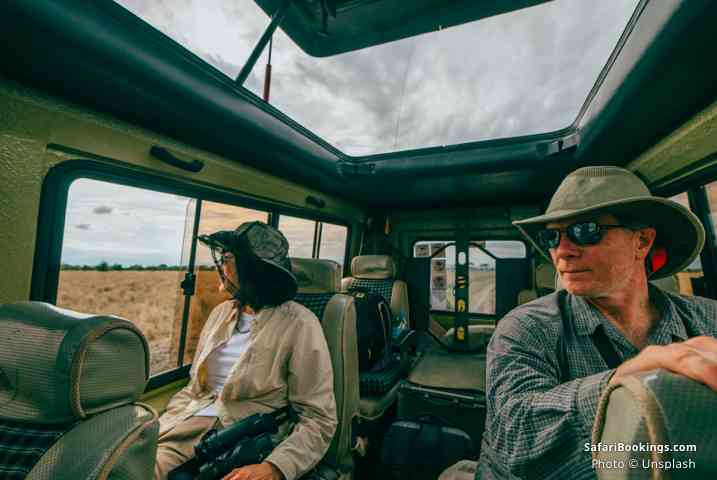
Of course you’re not going to forget clothes! But are you taking the right clothes…and are you within those weight restrictions your travel agent told you about for those light aircraft flights? Most international airlines will restrict your check-in luggage to around 20 to 30kgs (55lbs). However, if your safari itinerary includes any light aircraft flights, then this can mean as little as 12 to 15 kgs (sometimes including your hand luggage!).
Don’t panic! Remember, a same-day laundry service is usually available in most safari camps and lodges. This means you DO NOT need a change of clothes for each day you are on safari! The exception will be for mobile tented safaris where it is often difficult, due the mobile nature, to offer a laundry service. It may also be possible to leave a bag with the charter company, or person meeting you, for the duration of the safari portion. When in doubt, ask your travel agent.
Casual but Comfortable
Casual, comfortable clothing is suitable throughout the year when on safari. Whilst you may elect to start a completely new safari ‘wardrobe’ it is really not necessary to look like an extra on the set of Out of Africa! Apart from selecting reasonably neutral or ‘non-bright’ colored clothing, safari-wear is generally casual and practical. Be sure you take clothes that you feel comfortable in – especially when it comes to your walking/hiking boots. The newer quick-drying fabrics, shirts with ventilation and trousers that convert into shorts are all worth considering.
Layering Is Key
Wearing clothes in layers is the most practical way to cope with fluctuating day/night temperatures and cool evenings whilst on safari. As the day warms up you can peel off another layer. Then as it begins to cool toward evening, you can put them back on. Here's the "must-haves" to pack for your safari:
- A) T-shirt, shirt or blouse - long sleeves and collars help to protect from the sun and mosquitoes
- B) Fleece or warm jacket
- C) A pair of safari trousers - those that zip off at the knees are very handy, too
- D) Comfortable walking shoes (or boots) and socks
- F) Bandanna or cotton scarf and a sarong (kanga, pareo, kikoi)
- G) Maybe a pair of open sports sandals for general daytime use in warmer months
- H) Swimsuit - a number of lodges and camps have swimming pools
- I) An elegantly casual outfit for dinner at the smarter hotels
- J) A light, compact raincoat if it is likely you will encounter rain (gorilla and chimp trekking)
- K) And, of course, your undergarments

Dull and/or neutral colors are more suitable for safari, white and/or bright colours are not practical as they tend to stand out – definitely not advisable on a walking safari. Cotton clothing is recommended although the newer synthetic safari clothing lines are quick drying and extremely comfortable.
Check the Weather
Ask your travel agent (or check online) and find out what the weather will be like where you are going. You may not need any serious cold weather gear at all (and that will really help with the luggage limit!). Alternatively, if you are going anywhere in winter where the temperature drops dramatically when the sun goes down, you may need gloves, a scarf, a thick jacket and a beanie! Places like Hwange, Okavango, Linyanti and even Kruger are freezing in the early morning and late evening during the winter months (June through August). And this is magnified by a significant wind-chill factor that you'll feel when on the back of an open game-drive vehicle.
6. Phone, Music, Tablet or Laptop
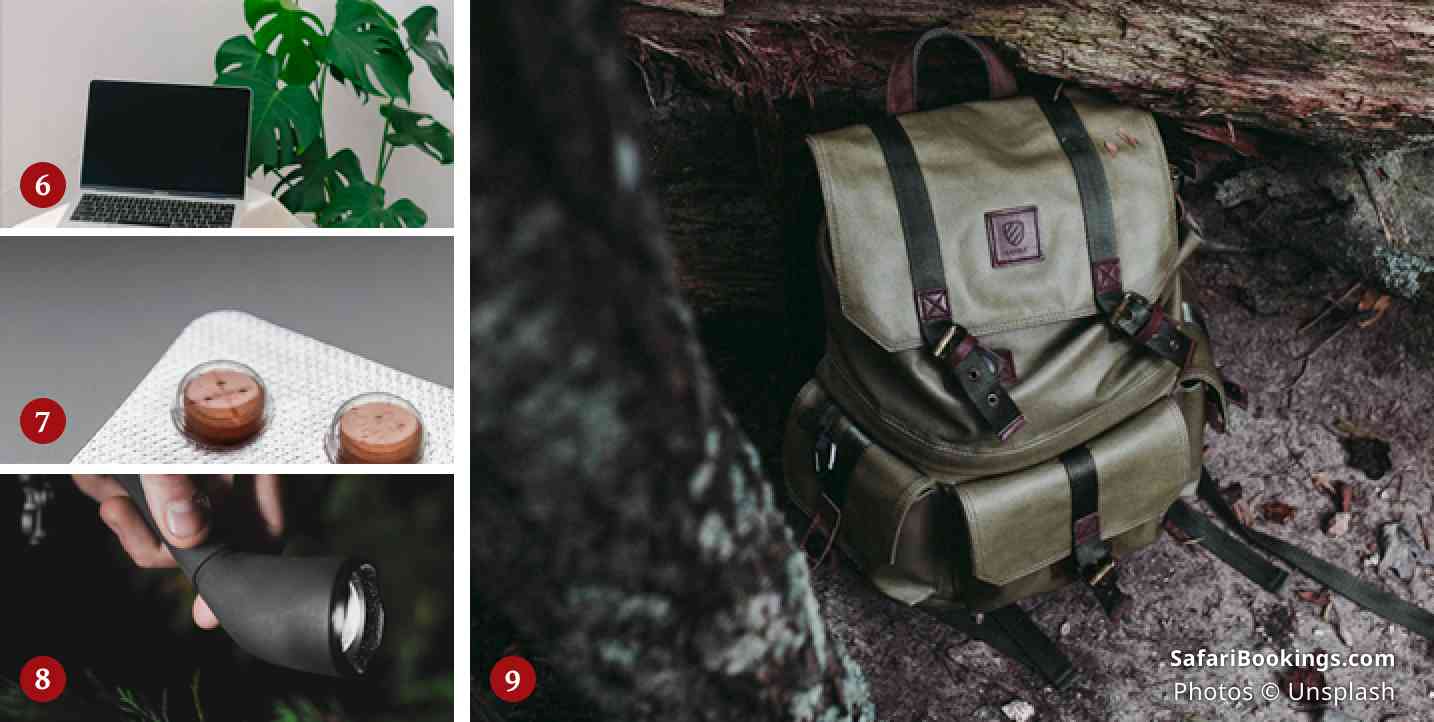
What you must pack for your safari are your phone, music, tablet or laptop - and their respective chargers, country-specific adaptor plugs.
7. Preventative Pharmaceuticals
This is just a fancy way of saying ‘meds’ – stuff you need, just in case the worst happens: diarrhea, headaches, heartburn, insect repellent, hand sanitizer, bites (antihistamine), indigestion, sore throat (lozenges), eye drops, and most important – anti-malarial tablets.
8. Odds & Ends
A good torch (flashlight) is a must. It can be pitch black in the bush or in your tent in the middle of the night. A rechargeable torch is ideal but a small battery-powered torch is sufficient. The new LED miner’s lights that fit on your head (and leave your hands free) are also a good option. A smaller (pencil) torch for emergencies or looking at star maps is also worth considering. Most camps will provide a torch, or will walk you back to your tent as required, but being self-sufficient is always a good idea.
A good book. It never hurts to have an interesting book when travelling. You never know when you are going to be delayed at the airport or fall victim to Africa time! A travel diary or journal is something we recommend. You will see and experience so much in such a short period of time on safari, that the only way to maintain a good record of it will be to write it down. It does require discipline, but will serve as an invaluable record of your safari adventure.
9. Hand Luggage
Firstly, try to restrict your hand luggage to one item only, if for no other reason than more than one item makes travel that much harder. And, yes, a handbag qualifies as a second item! Obviously, that one item should be of a size that is acceptable as carry-on luggage by the airlines. If you are a photographer, then this will mean you must have sufficient space in your camera bag for travel documents, your prescription medication and/or glasses, binoculars and even a change of clothes. Bear in mind that restrictions on what can and cannot be taken on board an aircraft are still in place – including for liquids, flammables and sharp objects. The rules change frequently, so please double-check and take heed.
10. Finally, Don’t Forget Your Sense of Humor, Patience and Some Common Sense!

It is not advisable to wear any form of clothing that may be construed as “camouflage”. By this we mean any form of brown/green “combat” style coloring. Even if it is the latest fashion statement – and even if it is your 14 year old wearing it – and even if it is just a cap. Many African authorities have a disproportionate phobia about such garments and this could conceivably result in you being questioned or harassed by the police. It has the potential to cause you grief, so don’t do it. Do not take any expensive personal jewelry on safari. Be minimalist or take only those everyday items that you normally wear, like your wedding band, inexpensive earrings.
With regard to securing your luggage, we would strongly suggest using one or more combination locks to secure zips together if your suitcase does not have its own locking mechanism. Luggage tampering in airports does occur, unfortunately. Luggage straps that wrap around your suitcase can also deter, whilst shrink-wrapping facilities are available at some airports.
Want To Go on an African Safari?
Click on the button below to compare African safaris offered by top-rated tour operators.
About SafariBookings
SafariBookings is the largest online marketplace for African safari tours. Easily compare offers from top-rated tour operators. Make decisions like a pro by using our 103,065 reviews and 223 destination guides. More About Us
Safaris by Type
- Luxury Safaris
- Budget Safaris
- Gorilla Trekking
- Chimp Trekking
- Family Safaris
- Private Safaris
- Group Safaris
- Photo Safaris
- Overland Tours
- Camping Safaris
- Fly-in Safaris
- Walking Safaris
- Birding Safaris
- Self-drive Safaris
- Canoe Safaris
Most Popular Blog Posts
- Best Time for African Safari
- Best Safari in South Africa
- Family Safari in South Africa
- African Safari Tips
- Game Reserves Near Cape Town
- What to Pack for a Safari
- Best African Safari Parks
- Top 5 Best African Honeymoon Safaris
- Top 5 Best Tanzania Family Safaris
- Best Places to See Cheetahs in Africa
- How Much Does an African Safari Cost?
- Best Places To Visit In Africa in 2024
Blog Categories
African safari tours.

7-Day Mara Lakes Nakuru, Naivasha & Amboseli Group Tour
$2,270 to $2,499 pp (USD)
Kenya: Shared tour (max 7 people per vehicle) Lodge & Tented Camp
You Visit: Nairobi (Start) , Masai Mara NR, Lake Nakuru NP, Lake Naivasha (Naivasha) , Amboseli NP, Nairobi (End)
Ramble Africa Safaris
5.0 /5 – 18 Reviews

8-Day Custom Safari (Big 5) & Gorilla Trekking in Uganda
$2,706 pp (USD)
Rwanda & Uganda: Private tour Lodge & Tented Camp
You Visit: Entebbe (Start) , Ziwa Rhino and Wildlife Ranch, Murchison Falls NP, Kibale NP (Chimps) , Queen Elizabeth NP, Bwindi NP (Gorillas) , Kigali Airport (End)
Home To Africa Tours and Travel
4.9 /5 – 278 Reviews

5-Day Luxury Safari to Ol Pejeta, Lake Nakuru & Mara
$1,458 to $2,420 pp (USD)
Kenya: Private tour Lodge & Tented Camp
You Visit: Nairobi (Start) , Ol Pejeta (Laikipia) , Lake Nakuru NP, Masai Mara NR, Nairobi (End)
Amazing Memories Safaris
5.0 /5 – 183 Reviews
Enjoy Free Shipping on Orders $100+ **Limitations and Restrictions Apply**

Login to my account
Enter your e-mail and password:
New customer? Create your account
Lost password? Recover password
Recover password
Enter your email:
Remembered your password? Back to login
Spend $50.00 more and get free shipping!
Your cart is empty

Ultimate Survival Technologies Heritage Survival Kit
Description.
Ultimate Survival Technologies Heritage Survival Kit is the perfect starter pack for preparing for an emergency while hiking or while camping. The metal tin offers an assortment of bandages and closures to cover a wound, scratch or scrap. Also included within the kit is a fire starter and tinder. The Heritage Survival Kit, from Ultimate Survival Technologies, is packed with signaling and navigation tools as well. While its fun and exciting to explore the outdoors, such as with hiking, camping or trekking, it is important to be prepared for the worst. The Heritage Survival Kit is a starter pack with basic tools you may need, when things get rough.
Ultimate Survival Technologies Heritage Survival Kit Features:
- 10 Bandages, Adhesive, 1" x 3"
- 2 Bandages, Knuckle
- 2 Butterfly Closures
- 2 Gauze Pads, Sterile, 2" x 2"
- 1 Fire Starter with Striker
- 1 Floating Whistle with Lanyard
- 4 Light-Me™ Tinder
- 1 Survival Card Tool 0.5
- 1 Tape, Plastic, 1/2" x 10 Yards
You may also like
Recently viewed.
- Opens in a new window.

Radiators fail once more: Moscow suburbs residents appeal to Putin
R esidents across the Moscow suburbs are besieged by a heating problem, for which they plead direct intervention from President Vladimir Putin. These individuals have yet to experience any semblance of home heating since winter started due to a dwindling supply of heating oil. The issue, one largely avoided by local authority communication, has left residents desperate to the point of directly appealing to the president.
While plots have been uncovered to disrupt Ukraine's infrastructure for a second consecutive winter, thus depriving civilians of heating, it seems Russians are now mired in their crisis. Irony drips from the fact that those under Putin's leadership are looking to cause turmoil in Ukraine, yet at home, they face a similar predicament.
Many dwellings within the Moscow agglomeration are presently without heat. The capital's residents are desperate, directly appealing to President Putin due to a perceived lack of alternate avenues for assistance. The absence of suitable heating functionality since winter commenced pushes them towards desperation with no relief in sight.
This seems improbable, but in Russia, it appears that anything can happen.
It remains uncertain if Vladimir Putin is actively addressing the heating crisis. Some experts suggest that Russia's heating oil reserves are depleting, which negatively affects residents' quality of life. Plagued by cold radiators and plummeting winter temperatures, these citizens have directly addressed their pleas to their head of state.
This heating crisis is happening in Elektrostal, a town approximately 71 miles from Moscow.
Ironically, Russia has constantly aimed to destroy the Ukrainian infrastructure since war broke out, deliberately trying to leave Ukrainians without heating during the harsh winters, aiming to break their strong will. It's an irony they now struggle with a domestic heating crisis, particularly near Moscow, their largest and most pivotal city.
Desperate individuals are reaching out to Vladimir Putin. They question his knowledge of the heating infrastructure conditions in the Moscow suburbs and the dire situations residents face there. Sundown brings no relief from the harsh Russian winter and without heating, their houses turn cold. With elections nearing, more and more residents find themselves reaching out directly to their president.
"Since winter's start, we've been without heating. This has been a yearly occurrence for the past three years. Despite paying for heating, we don't have enough. We implore you, help us!" - these are the desperate pleas from the heavily dressed populace dealing with the Russian winter conditions.
Experts attribute the heating oil shortage to international sanctions and surging demands for diesel fuel, pivotal to military operations. Russia now grapples with a dearth of raw materials essential for boiler and heating plant operation. As supplies dwindle, houses grow cold with little hope of any immediate corrective intervention.
It would be adequate if the war ceased, residents were prioritized, and attention accorded to their welfare.
Russians report Ukrainian drone shot down near Moscow
Putin faces strategic dilemma in prolonged Ukrainian war
Former Ukrainian deputy Kywa assassinated in Moscow amidst war tensions



Turn Your Curiosity Into Discovery
Latest facts.

Follistatin344 Peptide Considerations

Approach for Using 5 Tips To Help You Write Your Dissertation
40 facts about elektrostal.
Written by Lanette Mayes
Modified & Updated: 02 Mar 2024
Reviewed by Jessica Corbett

Elektrostal is a vibrant city located in the Moscow Oblast region of Russia. With a rich history, stunning architecture, and a thriving community, Elektrostal is a city that has much to offer. Whether you are a history buff, nature enthusiast, or simply curious about different cultures, Elektrostal is sure to captivate you.
This article will provide you with 40 fascinating facts about Elektrostal, giving you a better understanding of why this city is worth exploring. From its origins as an industrial hub to its modern-day charm, we will delve into the various aspects that make Elektrostal a unique and must-visit destination.
So, join us as we uncover the hidden treasures of Elektrostal and discover what makes this city a true gem in the heart of Russia.
Key Takeaways:
- Elektrostal, known as the “Motor City of Russia,” is a vibrant and growing city with a rich industrial history, offering diverse cultural experiences and a strong commitment to environmental sustainability.
- With its convenient location near Moscow, Elektrostal provides a picturesque landscape, vibrant nightlife, and a range of recreational activities, making it an ideal destination for residents and visitors alike.
Known as the “Motor City of Russia.”
Elektrostal, a city located in the Moscow Oblast region of Russia, earned the nickname “Motor City” due to its significant involvement in the automotive industry.
Home to the Elektrostal Metallurgical Plant.
Elektrostal is renowned for its metallurgical plant, which has been producing high-quality steel and alloys since its establishment in 1916.
Boasts a rich industrial heritage.
Elektrostal has a long history of industrial development, contributing to the growth and progress of the region.
Founded in 1916.
The city of Elektrostal was founded in 1916 as a result of the construction of the Elektrostal Metallurgical Plant.
Located approximately 50 kilometers east of Moscow.
Elektrostal is situated in close proximity to the Russian capital, making it easily accessible for both residents and visitors.
Known for its vibrant cultural scene.
Elektrostal is home to several cultural institutions, including museums, theaters, and art galleries that showcase the city’s rich artistic heritage.
A popular destination for nature lovers.
Surrounded by picturesque landscapes and forests, Elektrostal offers ample opportunities for outdoor activities such as hiking, camping, and birdwatching.
Hosts the annual Elektrostal City Day celebrations.
Every year, Elektrostal organizes festive events and activities to celebrate its founding, bringing together residents and visitors in a spirit of unity and joy.
Has a population of approximately 160,000 people.
Elektrostal is home to a diverse and vibrant community of around 160,000 residents, contributing to its dynamic atmosphere.
Boasts excellent education facilities.
The city is known for its well-established educational institutions, providing quality education to students of all ages.
A center for scientific research and innovation.
Elektrostal serves as an important hub for scientific research, particularly in the fields of metallurgy, materials science, and engineering.
Surrounded by picturesque lakes.
The city is blessed with numerous beautiful lakes, offering scenic views and recreational opportunities for locals and visitors alike.
Well-connected transportation system.
Elektrostal benefits from an efficient transportation network, including highways, railways, and public transportation options, ensuring convenient travel within and beyond the city.
Famous for its traditional Russian cuisine.
Food enthusiasts can indulge in authentic Russian dishes at numerous restaurants and cafes scattered throughout Elektrostal.
Home to notable architectural landmarks.
Elektrostal boasts impressive architecture, including the Church of the Transfiguration of the Lord and the Elektrostal Palace of Culture.
Offers a wide range of recreational facilities.
Residents and visitors can enjoy various recreational activities, such as sports complexes, swimming pools, and fitness centers, enhancing the overall quality of life.
Provides a high standard of healthcare.
Elektrostal is equipped with modern medical facilities, ensuring residents have access to quality healthcare services.
Home to the Elektrostal History Museum.
The Elektrostal History Museum showcases the city’s fascinating past through exhibitions and displays.
A hub for sports enthusiasts.
Elektrostal is passionate about sports, with numerous stadiums, arenas, and sports clubs offering opportunities for athletes and spectators.
Celebrates diverse cultural festivals.
Throughout the year, Elektrostal hosts a variety of cultural festivals, celebrating different ethnicities, traditions, and art forms.
Electric power played a significant role in its early development.
Elektrostal owes its name and initial growth to the establishment of electric power stations and the utilization of electricity in the industrial sector.
Boasts a thriving economy.
The city’s strong industrial base, coupled with its strategic location near Moscow, has contributed to Elektrostal’s prosperous economic status.
Houses the Elektrostal Drama Theater.
The Elektrostal Drama Theater is a cultural centerpiece, attracting theater enthusiasts from far and wide.
Popular destination for winter sports.
Elektrostal’s proximity to ski resorts and winter sport facilities makes it a favorite destination for skiing, snowboarding, and other winter activities.
Promotes environmental sustainability.
Elektrostal prioritizes environmental protection and sustainability, implementing initiatives to reduce pollution and preserve natural resources.
Home to renowned educational institutions.
Elektrostal is known for its prestigious schools and universities, offering a wide range of academic programs to students.
Committed to cultural preservation.
The city values its cultural heritage and takes active steps to preserve and promote traditional customs, crafts, and arts.
Hosts an annual International Film Festival.
The Elektrostal International Film Festival attracts filmmakers and cinema enthusiasts from around the world, showcasing a diverse range of films.
Encourages entrepreneurship and innovation.
Elektrostal supports aspiring entrepreneurs and fosters a culture of innovation, providing opportunities for startups and business development.
Offers a range of housing options.
Elektrostal provides diverse housing options, including apartments, houses, and residential complexes, catering to different lifestyles and budgets.
Home to notable sports teams.
Elektrostal is proud of its sports legacy, with several successful sports teams competing at regional and national levels.
Boasts a vibrant nightlife scene.
Residents and visitors can enjoy a lively nightlife in Elektrostal, with numerous bars, clubs, and entertainment venues.
Promotes cultural exchange and international relations.
Elektrostal actively engages in international partnerships, cultural exchanges, and diplomatic collaborations to foster global connections.
Surrounded by beautiful nature reserves.
Nearby nature reserves, such as the Barybino Forest and Luchinskoye Lake, offer opportunities for nature enthusiasts to explore and appreciate the region’s biodiversity.
Commemorates historical events.
The city pays tribute to significant historical events through memorials, monuments, and exhibitions, ensuring the preservation of collective memory.
Promotes sports and youth development.
Elektrostal invests in sports infrastructure and programs to encourage youth participation, health, and physical fitness.
Hosts annual cultural and artistic festivals.
Throughout the year, Elektrostal celebrates its cultural diversity through festivals dedicated to music, dance, art, and theater.
Provides a picturesque landscape for photography enthusiasts.
The city’s scenic beauty, architectural landmarks, and natural surroundings make it a paradise for photographers.
Connects to Moscow via a direct train line.
The convenient train connection between Elektrostal and Moscow makes commuting between the two cities effortless.
A city with a bright future.
Elektrostal continues to grow and develop, aiming to become a model city in terms of infrastructure, sustainability, and quality of life for its residents.
In conclusion, Elektrostal is a fascinating city with a rich history and a vibrant present. From its origins as a center of steel production to its modern-day status as a hub for education and industry, Elektrostal has plenty to offer both residents and visitors. With its beautiful parks, cultural attractions, and proximity to Moscow, there is no shortage of things to see and do in this dynamic city. Whether you’re interested in exploring its historical landmarks, enjoying outdoor activities, or immersing yourself in the local culture, Elektrostal has something for everyone. So, next time you find yourself in the Moscow region, don’t miss the opportunity to discover the hidden gems of Elektrostal.
Q: What is the population of Elektrostal?
A: As of the latest data, the population of Elektrostal is approximately XXXX.
Q: How far is Elektrostal from Moscow?
A: Elektrostal is located approximately XX kilometers away from Moscow.
Q: Are there any famous landmarks in Elektrostal?
A: Yes, Elektrostal is home to several notable landmarks, including XXXX and XXXX.
Q: What industries are prominent in Elektrostal?
A: Elektrostal is known for its steel production industry and is also a center for engineering and manufacturing.
Q: Are there any universities or educational institutions in Elektrostal?
A: Yes, Elektrostal is home to XXXX University and several other educational institutions.
Q: What are some popular outdoor activities in Elektrostal?
A: Elektrostal offers several outdoor activities, such as hiking, cycling, and picnicking in its beautiful parks.
Q: Is Elektrostal well-connected in terms of transportation?
A: Yes, Elektrostal has good transportation links, including trains and buses, making it easily accessible from nearby cities.
Q: Are there any annual events or festivals in Elektrostal?
A: Yes, Elektrostal hosts various events and festivals throughout the year, including XXXX and XXXX.
Was this page helpful?
Our commitment to delivering trustworthy and engaging content is at the heart of what we do. Each fact on our site is contributed by real users like you, bringing a wealth of diverse insights and information. To ensure the highest standards of accuracy and reliability, our dedicated editors meticulously review each submission. This process guarantees that the facts we share are not only fascinating but also credible. Trust in our commitment to quality and authenticity as you explore and learn with us.
Share this Fact:

IMAGES
VIDEO
COMMENTS
22. Toilet Paper/Wipes. Depending on your safari destination, there may not be any bathrooms within a 2-hour radius, so be prepared by packing toilet paper/wipes and hand sanitizer! These are absolutely essential items for your safari packing list! 23. Anti-Malaria Tablets.
Safari Accessories. Our safari survival kit of necessary and convenient safari accessories - including safari torches, safari insect repellent, safari gadgets, protection-on-safari products, and handy outdoor safari gear for African travel. Show product filters + Sort by Types. Shirts ...
Travel insurance. Proof of required vaccinations. Photocopies of all your important documents — passport, visa, air tickets, travel insurance, etc. Cash for expenses. A cellphone and charger. Medication and prescriptions. 1. African Savanna Clothing Essentials. Okay, so you know you need safari clothes.
Safari survival kit items. My safari survival kit items are those I'm loath to leave at home, since they are so useful when on the road, and always fit into a little nook with ease. - Combination padlock. Make sure it fits any locking mechanism on your luggage or you're carrying dead weight. - Water filtration device.
View on Amazon.com . 5. Binoculars with Phone Adapter. Africa boasts some of the most majestic scenery that planet Earth has to offer, not to mention its most mysterious creatures. One of the most essential items on your list, after investing so much to get here, is being able to take in the sights clearly.
Do take a first aid kit. 17. Don't leave your lights on in your tent - to conserve energy and avoid attracting bugs. 18. Do keep your tent zipped up at all times - or you might get a nasty surprise waiting for you inside, including but not limited to snakes, lizards, bats and spiders. 19. Don't hunt.
Get outside and explore! Our Safari Survival Kit includes a compass, magnifier, binocular, and mirror all in one small handy tool. Colorful two-toned blues with our San Diego Zoo & Safari Park logo in white. The tool measures 3 1/2 inches tall and 1 1/2 inches wide, perfect for your pockets. FEATURES Get outside an
What Safari Packing List Essentials to Pack for All Safaris (per person): 1 wide-brim Safari Hat. 1 Safari Beanie for winter. 3 Safari Shirts. 1 warm Safari Fleece or Jacket. 1 optional Safari Dress or Skorts for women. 2 pairs of Safari Trousers and/or Shorts. 2 pairs Safari Socks. 1 pair Safari Shoes.
July 1, 2021. Your survival kit is for emergencies — unexpected occurrences where, for some reason, you find yourself facing a direr situation than planned. Global Rescue expert Harding Bush explains what to pack in a survival kit. Any time you take yourself into the wilderness, you are entering some level of a survival situation.
Planning a safari can be an exciting and rewarding experience, but it's important to be prepared for the unique challenges that come with travelling to the African wilderness. Skip to content +255766657854
In these situations, the fine line between succumbing to the elements and surviving the wild lies in your survival kit! In other words, never skimp out when preparing a survival kit if you intend to go out into the wild! Here is what you need to include in your ultimate survival kit. 1. Map A map is crucial because people sometimes get lost
The SOG SOGfari Combo Kit comes with everything that you need to take on the safari. Included in this kit is the SOG Entrenching Tool, a folding shovel with a serrated edge; a 13" SOGfari machete with a serrated back and glass breaking end; a 11" hand ax; and an autoclip folding knife for smaller tasks. The Hand Axe features a simple and ...
Depending on the length of your stay, fetch 2-4 comfortable short and long-sleeved shirts. Pack 1-2 pairs of hiking pants and 1-2 pairs of shorts. Trousers that convert into shorts (those with a zip at the knees) are one of the greatest inventions yet! (When it comes to safaris, at least). Consider grabbing a pair so that you can escape the ...
Of course, for buffalo and the like, you'll find that there are minimum caliber or energy requirements. These usually start with cartridges like the 9.3x62mm Mauser or the 375 Holland & Holland ...
6) First Aid Kit. A stripped down first aid kit would include the bare essentials: a Sam splint, some Ace bandages and gauze pads of various sizes. Merola and Weinstein also recommend a tourniquet, a compression device that could be a lifesaver when you need to stop the flow of blood. 7) Fire Starter. Fire is a top priority in a survival situation.
Here's the "must-haves" to pack for your safari: A) T-shirt, shirt or blouse - long sleeves and collars help to protect from the sun and mosquitoes. B) Fleece or warm jacket. C) A pair of safari trousers - those that zip off at the knees are very handy, too. D) Comfortable walking shoes (or boots) and socks. E) Hat.
The Heritage Survival Kit is a starter pack with basic tools you may need, when things get rough. Ultimate Survival Technologies Heritage Survival Kit Features: 10 Bandages, Adhesive, 1" x 3" 2 Bandages, Knuckle 2 Butterfly Closures 2 Gauze Pads, Sterile, 2" x 2" 1 Fire Starter with Striker
A must-have survival kit for all those on safari - the essentials for any game drive or bush walk
Safari. Mozilla Firefox. Microsoft Edge. SURVIVAL CATEGORIES. All Survival Essentials. First Aid. ... Save $15 off purchase of $60+ select survival essentials *Use Promo Code SURVIVE15. Offer valid online only. Offer valid online only on select gear. ... BSA® Scout First Aid Kit. First Aid Field Guide. SOL® Survival Pack. First Aid MB ...
Former Ukrainian deputy Kywa assassinated in Moscow amidst war tensions. Residents across the Moscow suburbs are besieged by a heating problem, for which they plead direct intervention from ...
Welcome to the 628DirtRooster website where you can find video links to Randy McCaffrey's (AKA DirtRooster) YouTube videos, community support and other resources for the Hobby Beekeepers and the official 628DirtRooster online store where you can find 628DirtRooster hats and shirts, local Mississippi honey and whole lot more!
40 Facts About Elektrostal. Elektrostal is a vibrant city located in the Moscow Oblast region of Russia. With a rich history, stunning architecture, and a thriving community, Elektrostal is a city that has much to offer. Whether you are a history buff, nature enthusiast, or simply curious about different cultures, Elektrostal is sure to ...